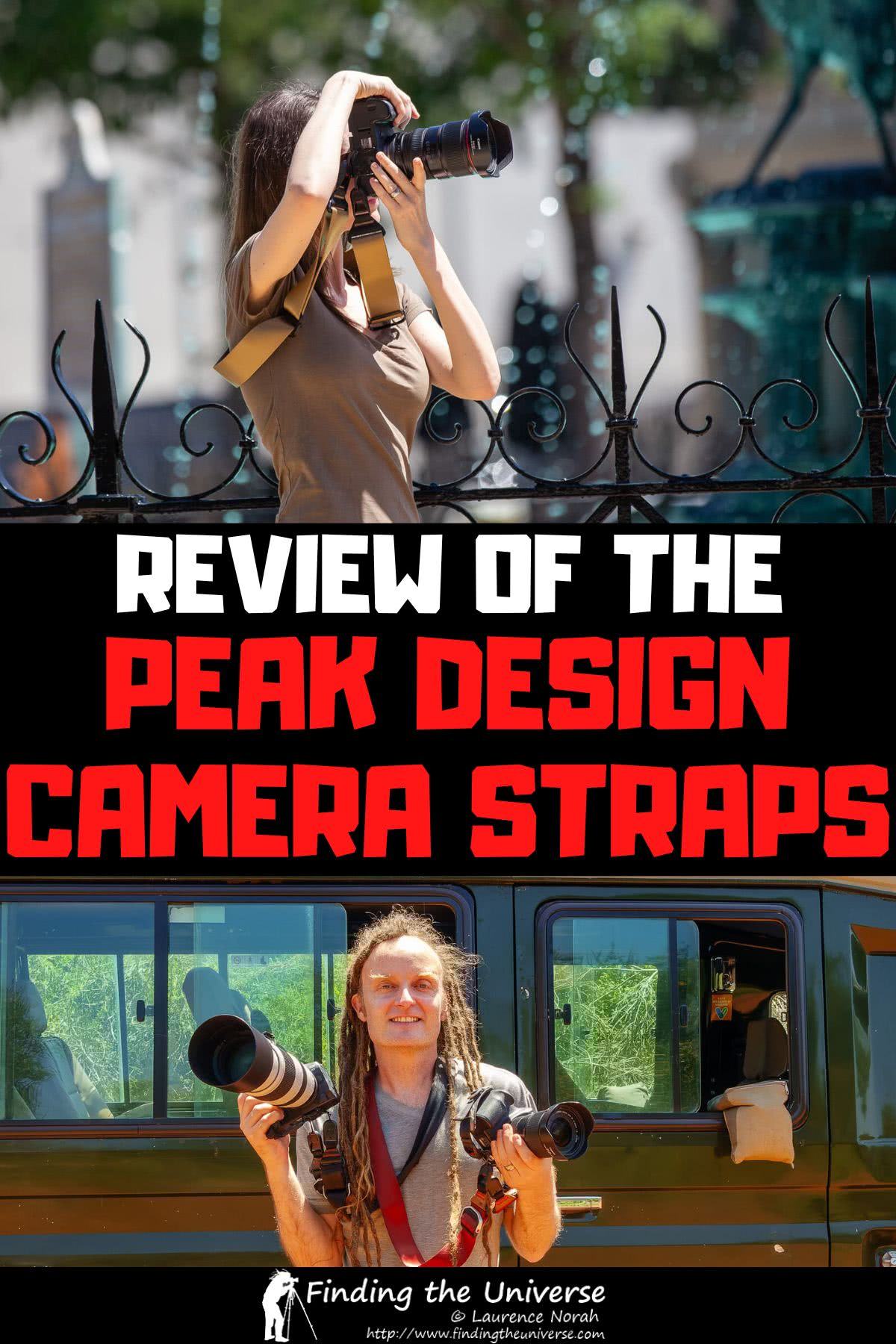I’ve used many camera setups through my years as a professional photographer. However, one thing that has remained the same for a long time across multiple camera setups is the camera strap system I’ve been using. In this guide, I’m going to be reviewing all the Peak Design camera straps to help you decide which is best for you.
Since I first bought my Peak Design Slide and Clutch camera straps in 2015, Jess and I have been pretty much exclusively using the Peak Design strap system across all our DSLR and mirrorless cameras.
Over the years, I’ve tried and tested pretty much every Peak Design camera strap that they make.
I’ve taken them all around the world, from far below zero temperatures photographing the northern lights to the hot and humid jungles of Uganda on gorilla trekking and birdwatching trips.
My Peak Design camera straps have been rained on, snowed on, covered in mud, stuffed in a camera bag, and generally been through the wringer.
One has even been chewed on by a fox (more on that later!).
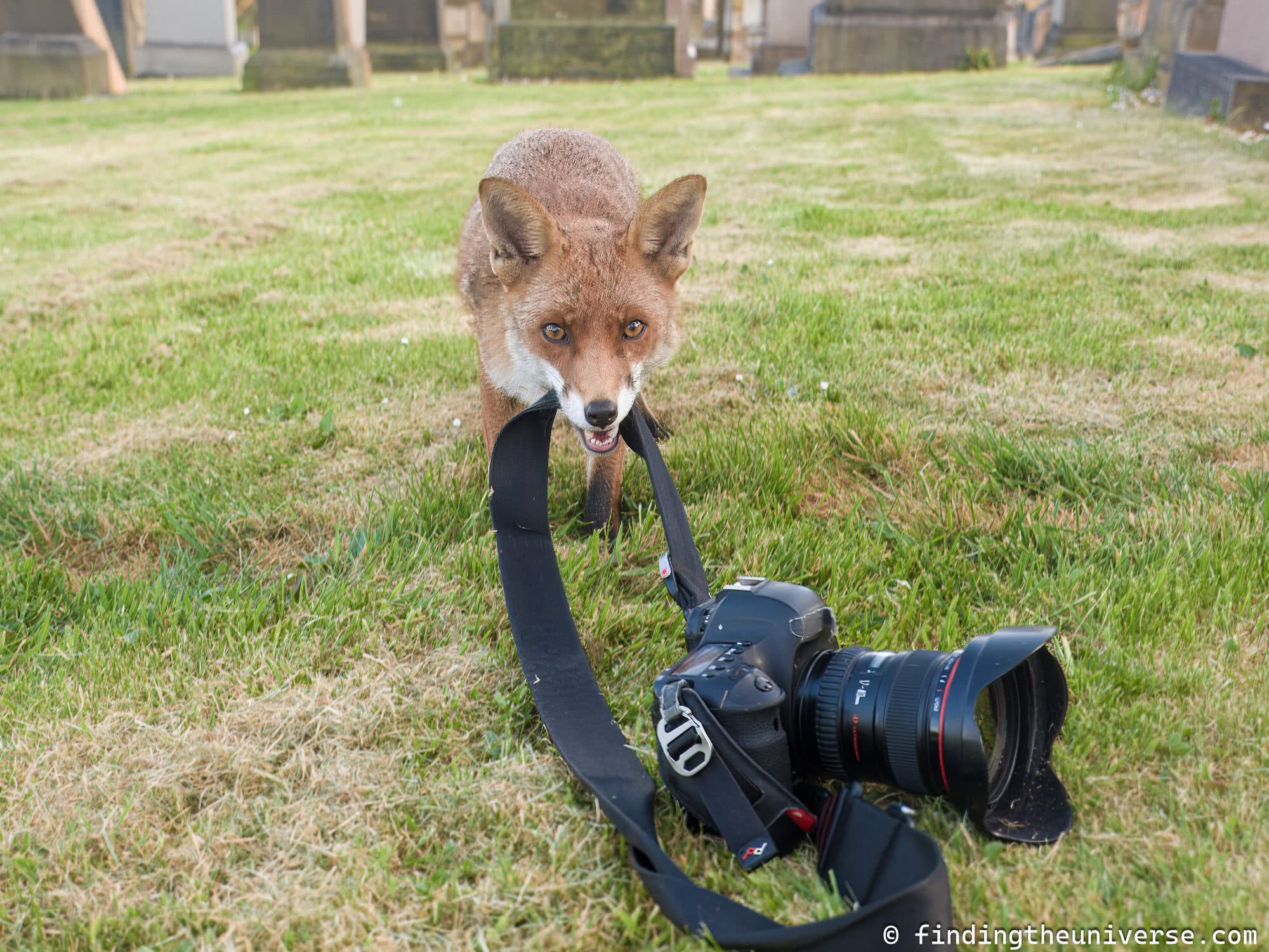

After all that, I thought it was about time I put together a review of the Peak Design camera straps, based on my experiences actually using them.
I’ll cover the good, the bad, my experience with Peak Design’s customer service, who the straps are for, the options available, and lots more.
Peak Design make a variety of straps for a range of uses and camera sizes. By the end of this review, you should have a good idea of whether or not this strap system is a good option for your camera setup, as well as which specific model might be right for you. Let’s start with a quick introduction to Peak Design.
Who is Peak Design?
Peak Design is a U.S. based company, founded in 2010 by Peter Dering. The company launched its first product in 2011, a camera clip system called Capture, which is still available today.
Peak Design primarily creates products which are designed to help people organize, protect, pack, and use their photography gear. These include camera straps and clips, camera bags, tripods, etc.
Given their popularity, they have also introduced some more general products designs for travelers and commuters, including packing cubes, wash bags, commuter backpacks, and mobile phone cases.
They aim to create products which look good and last a long time. They come with a lifetime warranty as standard.
Peak Design is known for their innovative and stylish designs. Many of their products are also designed to work well together, so for example you can use the strap to carry the tripod bag as well as a camera.
They also have solid environmental credentials, being fully carbon neutral, a registered B Corp, and they also donate 1% of all their revenue to environmental nonprofits.
You can buy Peak Design products directly on their website here, or you can buy them from Amazon here.
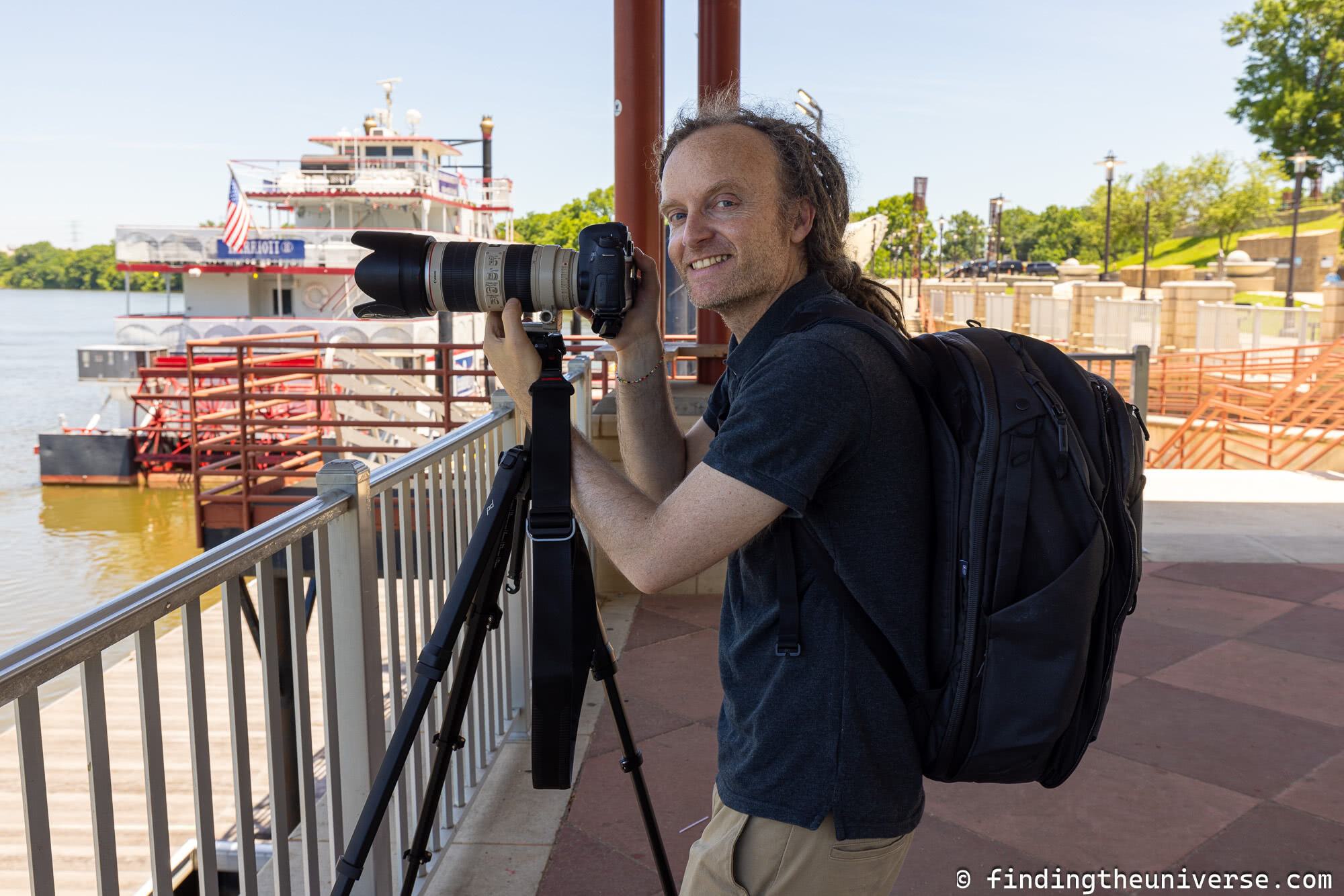

What is so special about Peak Design camera straps?
Peak Design started when its founder, Peter Dering, was looking for a more comfortable camera strap system after a long trip back in 2010.
The company’s first products were their innovative camera clips and straps, and it was these products that initially made them popular among photographers.
The standout features of their straps, which I will cover in more depth, are their comfort, durability, attachment system, materials and warranty.
Peak Design now make lots of different products and I think get a lot of buzz for their bags. I do own several other Peak Design products. For example, I currently have a Peak Design camera backpack, some camera packing cubes, and a Peak Design travel tripod.
I also own all the Peak Design straps that they’ve made to date, as well as the original Peak Design Capture clip.
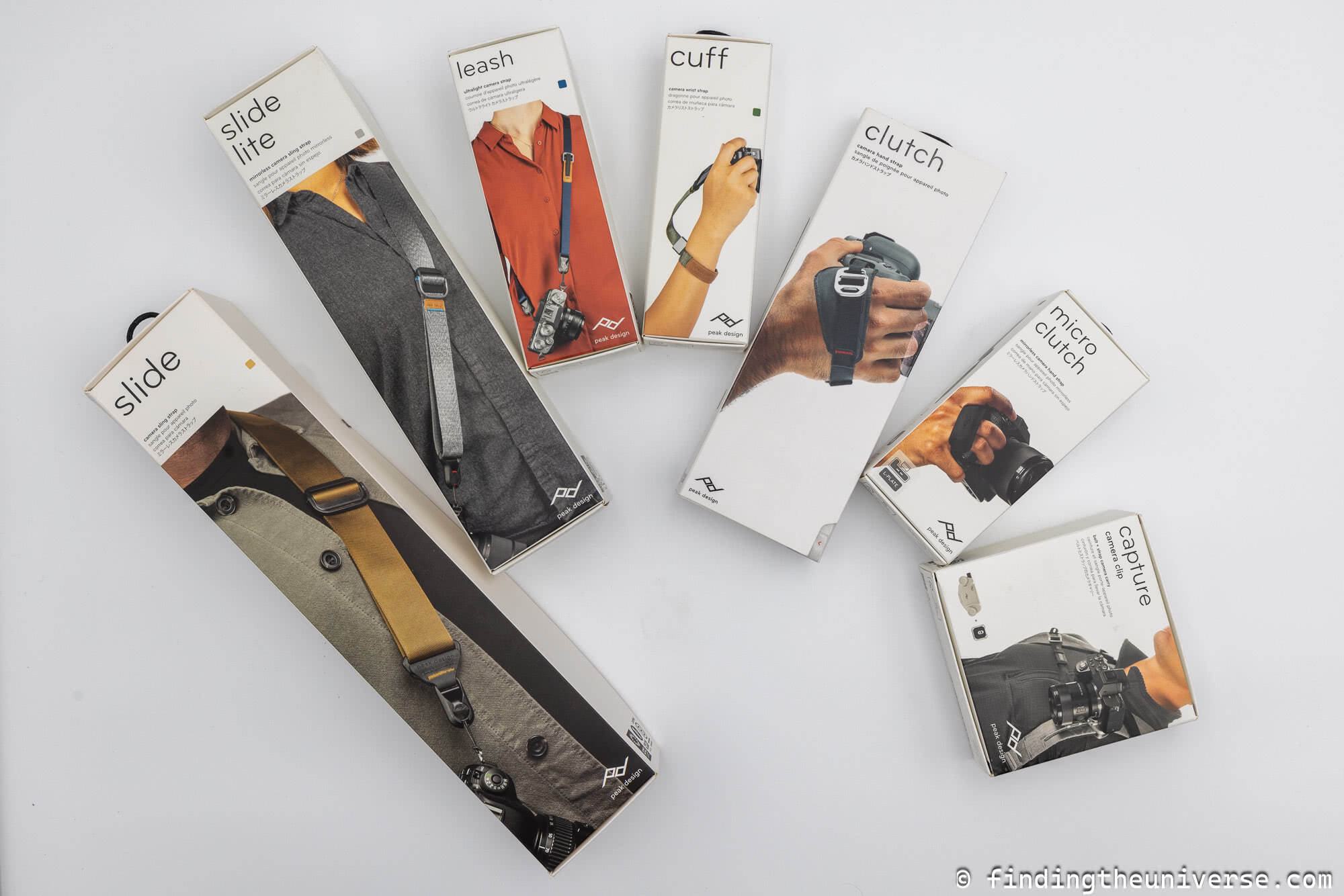

While I have liked many of their other products I have tried, I think that their camera strap system remains their hero products for many photographers such as myself.
I first bought a Peak Design Slide strap back in 2015 and have never used another camera strap system since. I now own three of their Slide straps as well as a number of their other straps and continue to recommend them to other photographers based on my experience with them.
The main straps Jess and I use on a day-to-day basis are the Slide straps and the Clutch strap. However, we have experience with all the straps and they all work well.
In this review I am going to focus on the Peak Design camera straps and go over the various straps available and share my personal review and experiences with them.
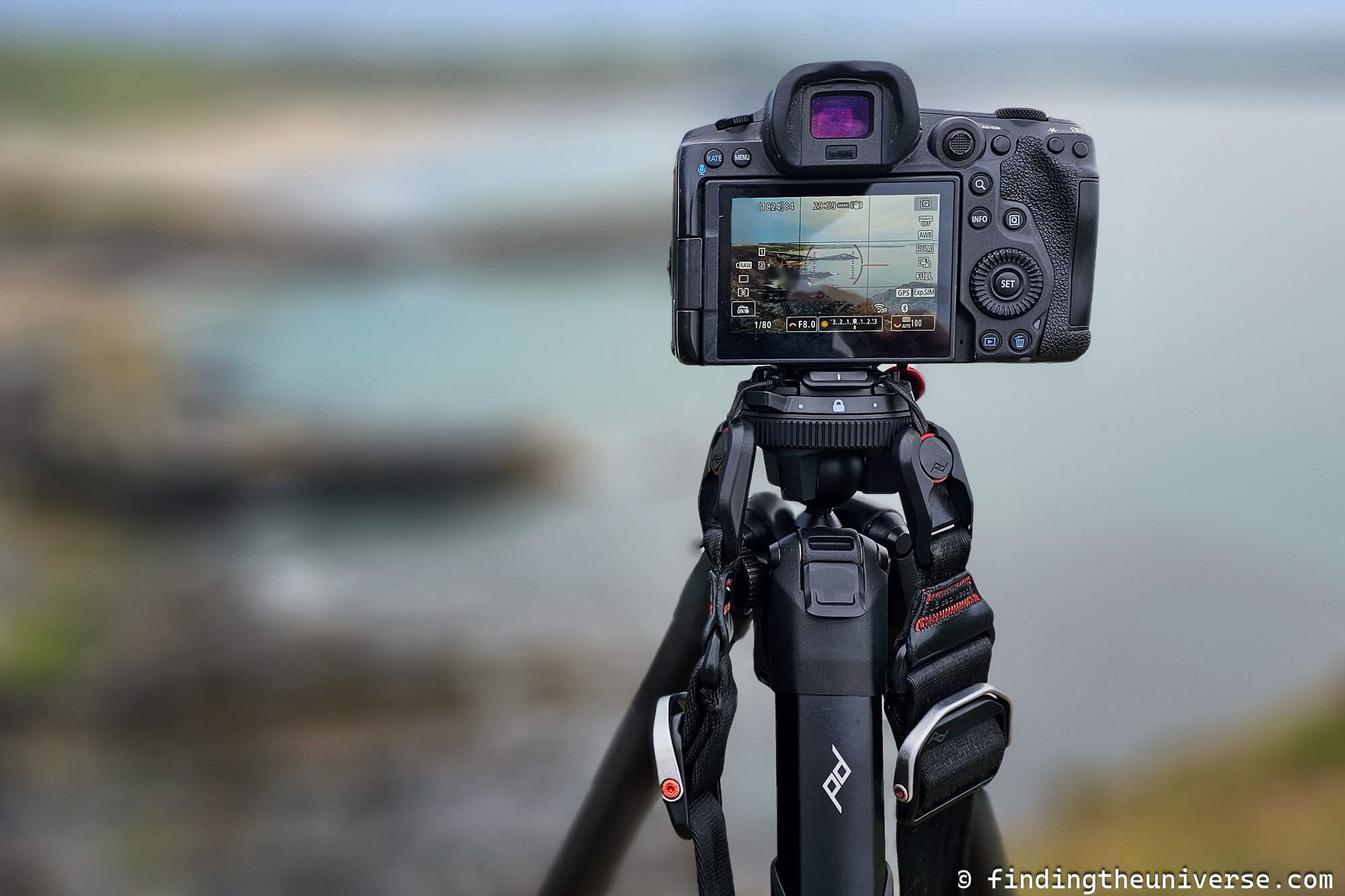

Peak Design Camera Strap Choices
Peak Design make a variety of straps, with the main differences being the size of the strap (width, weight and length), as well as how the strap is designed to be worn.
These differences make the various strap models suitable for different purposes, with some straps being more suited to larger camera models and others suiting more compact camera models for example.
Some straps are also well suited to other purposes beyond being as camera strap, such as for binoculars or as a strap for your tripod or camera bag.
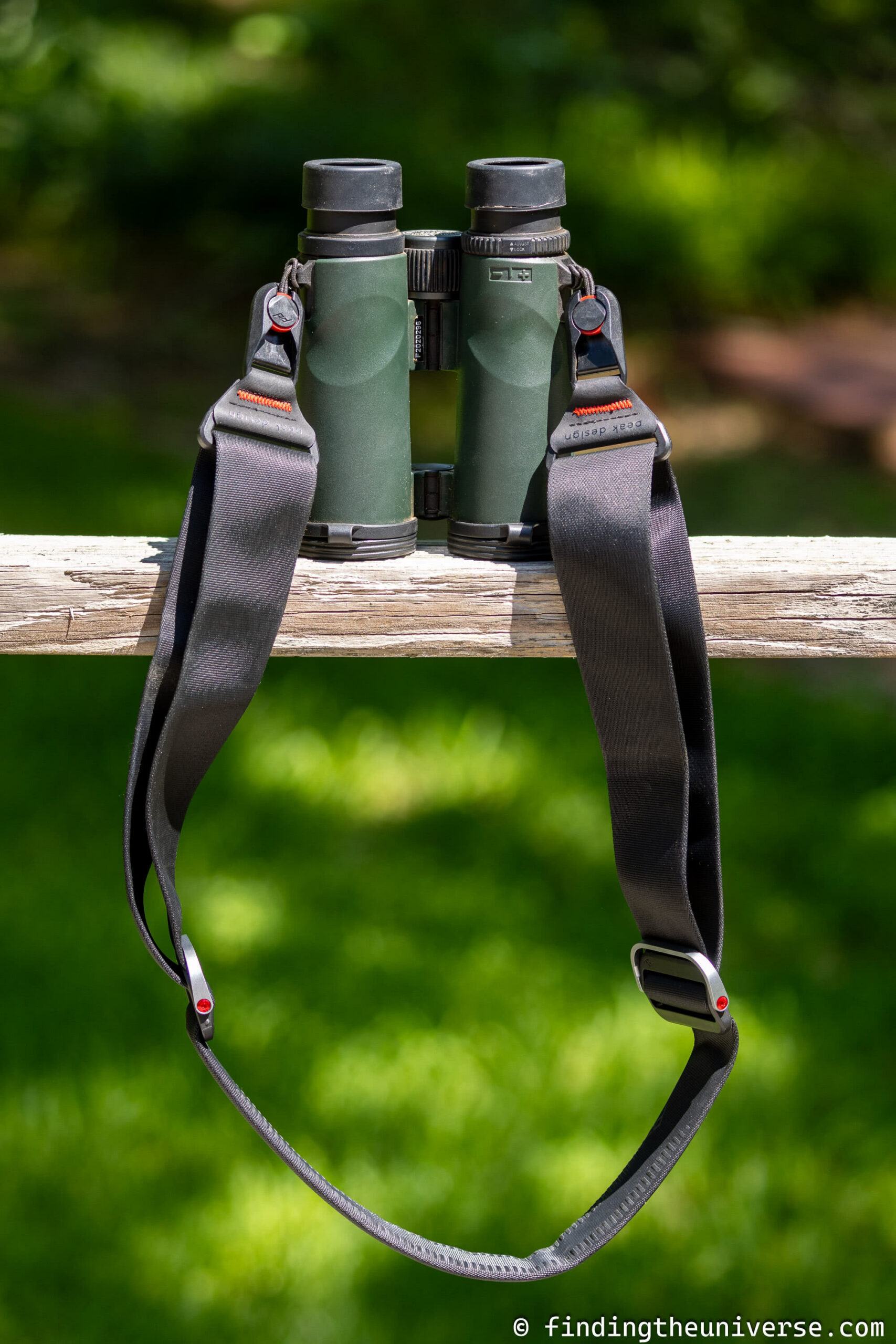

Some Peak Design camera straps are designed as a full body strap to be worn over a shoulder, around the neck, or as a sling, whilst other straps are designed as wrist or hand straps.
The main camera straps that Peak Design offer are as follows.
Peak Design Slide Strap
This is the main strap that Jess and I use for our cameras, we currently own three of these straps. They have had slight tweaks over the years but the main design is the same.
The strap is designed so you can wear it in three ways, as a neck strap, a shoulder strap and a sling strap. My personal favorite is wearing it as a sling strap.
The strap is made out of a strong nylon webbing material, which is honestly quite like a seatbelt strap in texture and feel. The majority of the strap is smooth and slides easily.
The area which sits around your neck or shoulder (depending on how you wear it) is padded internally for comfort. It also has a gripped surface on one side to prevent the strap from sliding around.
The strap is adjustable, with a quick release handle that lets you quickly and easily adjust how long the strap is. The maximum length is 57″ (145cm) and the minimum length is 39″ (99cm).
The strap comes with an anchor mount, four anchor connectors, a hex wrench and a microfiber pouch. It can handle gear up to 200lbs.
This is the strap I would generally recommend for carrying a larger setup such as a bigger mirrorless or DSLR camera as well as larger telephoto lenses. It’s also a good choice if you just prefer a wider strap as the weight is distributed more evenly.
See more about the Peak Design Slide strap here.
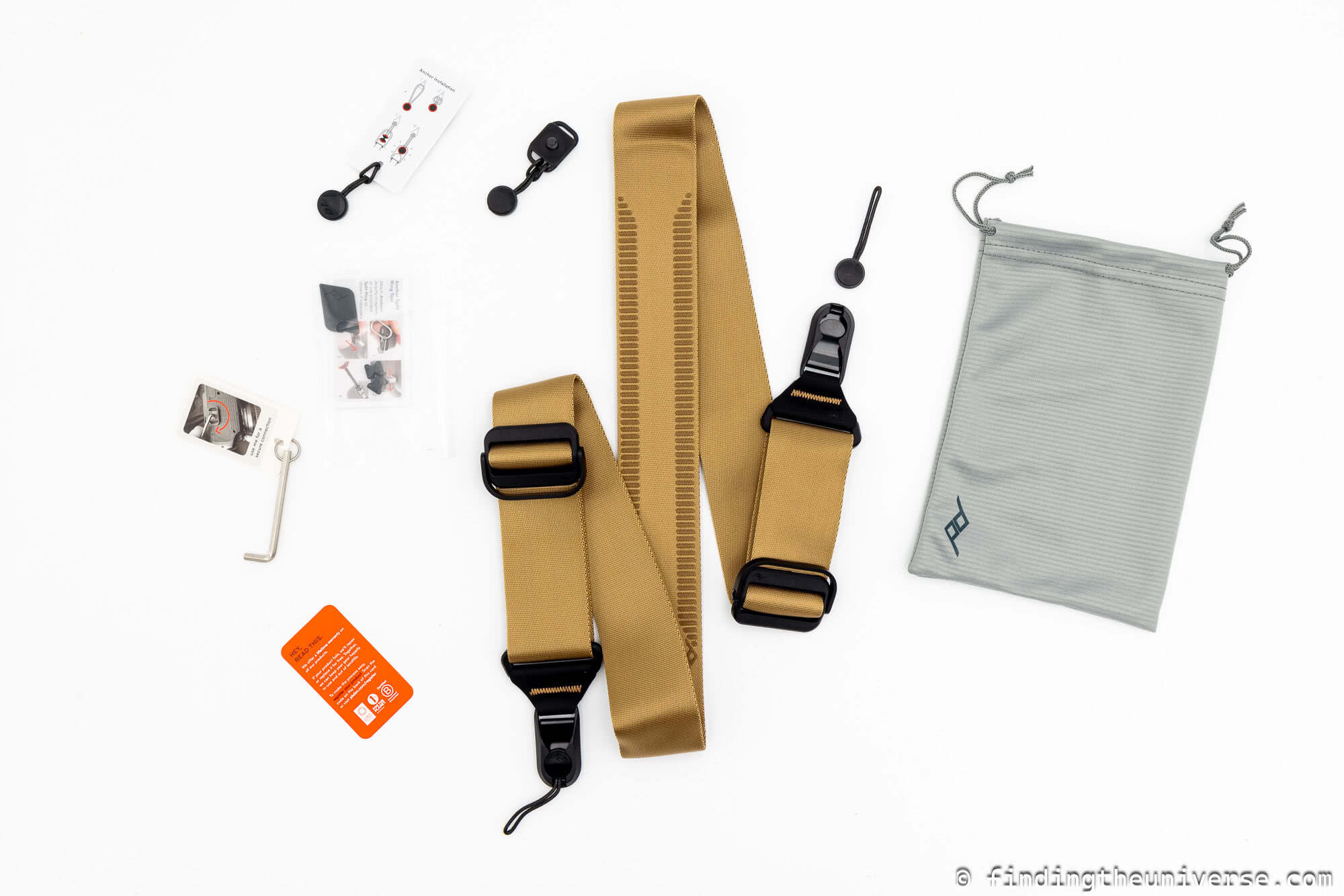

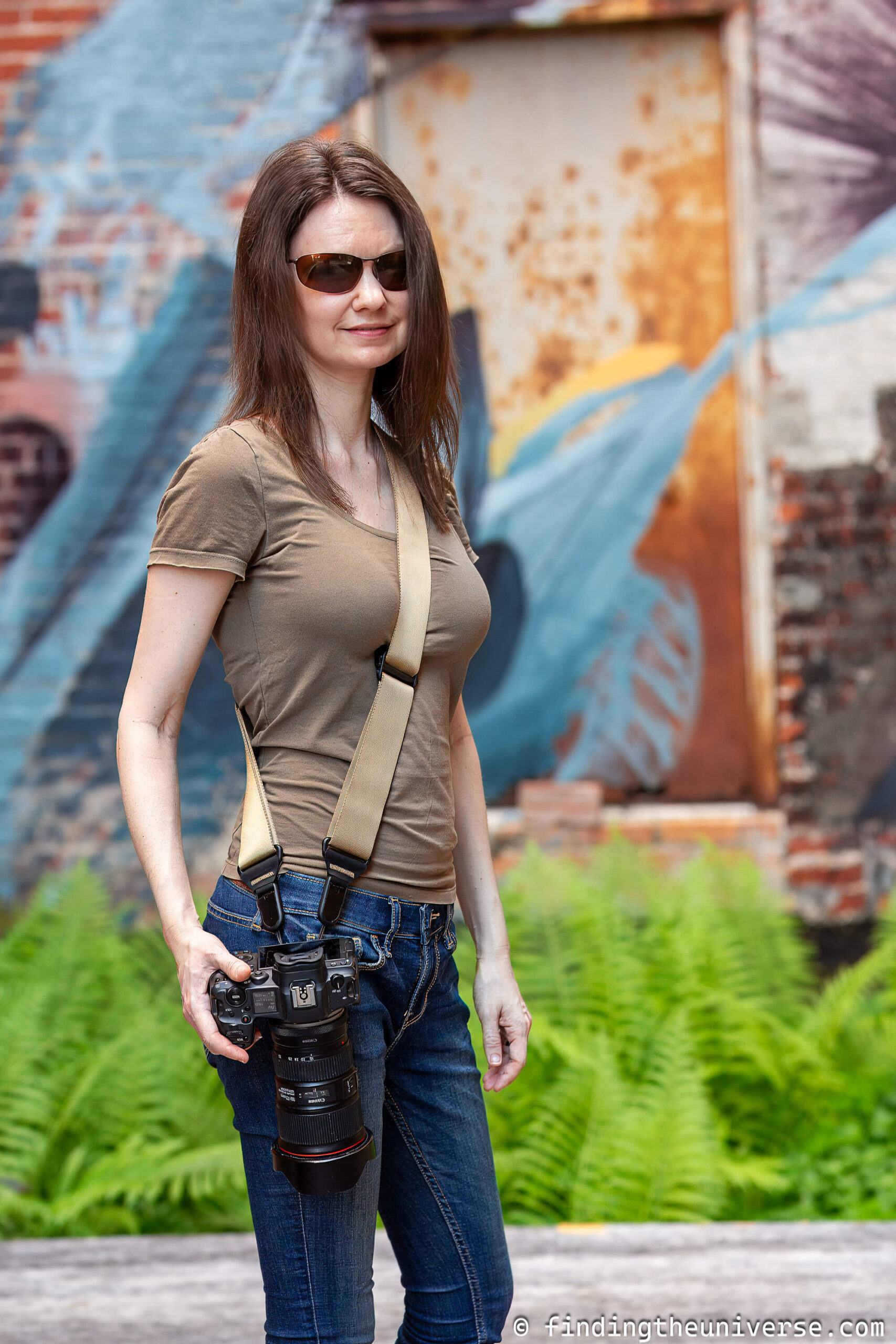

Peak Design Slide Lite Strap
The Slide Lite is honestly very similar to the Slide, it’s just a bit thinner. However, it can handle the same weight load and has the same features.
So you still get the anchor point system, comfortable smooth nylon webbing with padding and a grippy side, and adjustability. You also get all the same products in the box.
However, the strap is 1.3″ wide (32mm) compared to the 1.8″ (45mm) of the original Slide. So if you feel the Slide is a bit chunky for your tastes, then the Slide Lite might be for you. It still has the same maximum length of 57″ (145cm) and minimum length of 39″ (99cm).
It can also support the same weight, but I’d recommend it for slightly smaller mirrorless cameras, bridge cameras, and binoculars rather than the largest of devices.
This isn’t because it can’t take the weight, but rather is more to do with comfort over long periods of wearing the strap.
A slightly thinner strap means the weight isn’t distributed over as much area, so over time the Slide is likely to be more comfortable with particularly heavy setups.
We really like the Slide Lite though, we think it looks very stylish and is a great alternative to the Slide if you want all the functionality in a slightly slimmer design.
See more about the Peak Design Slide Lite strap here.
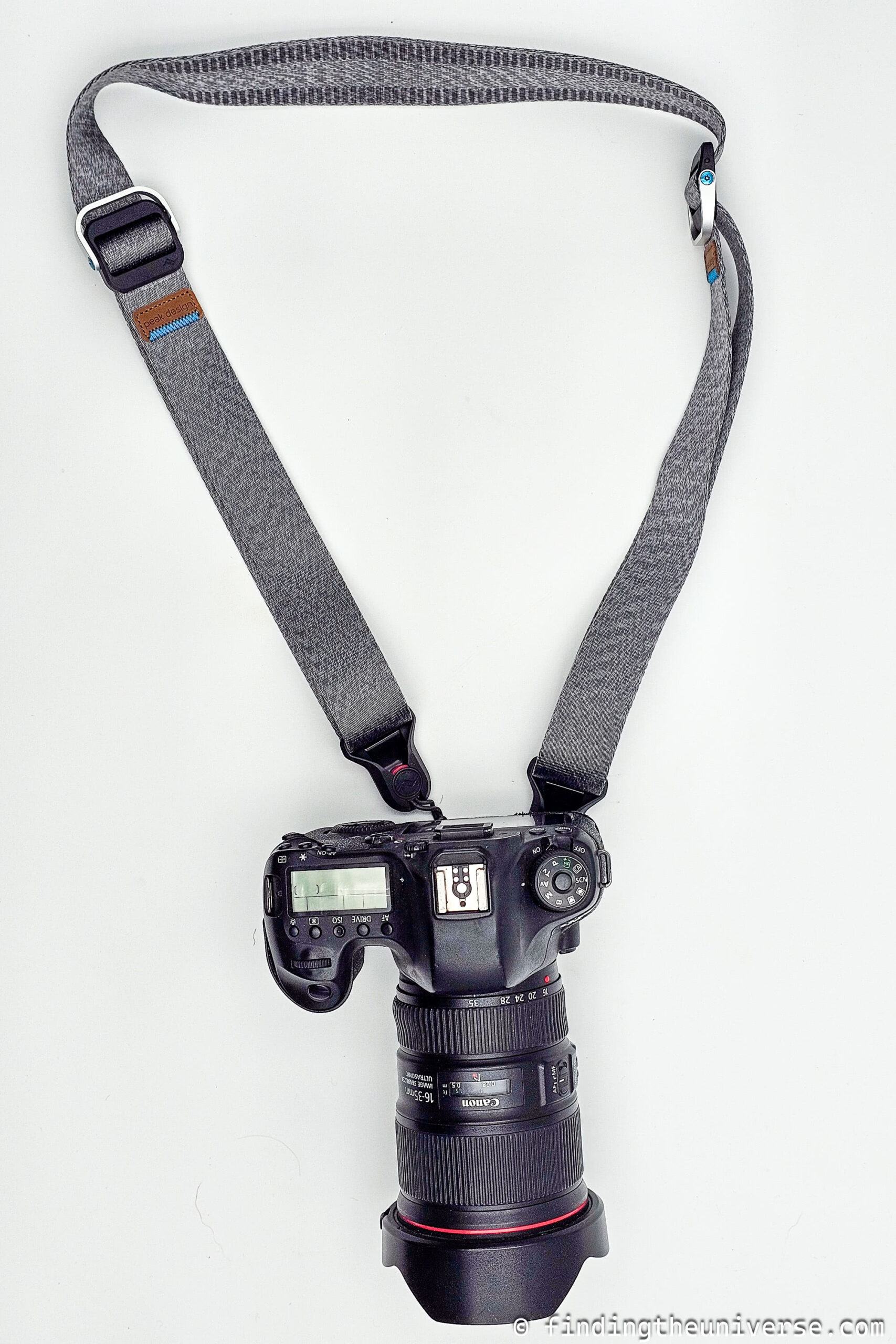

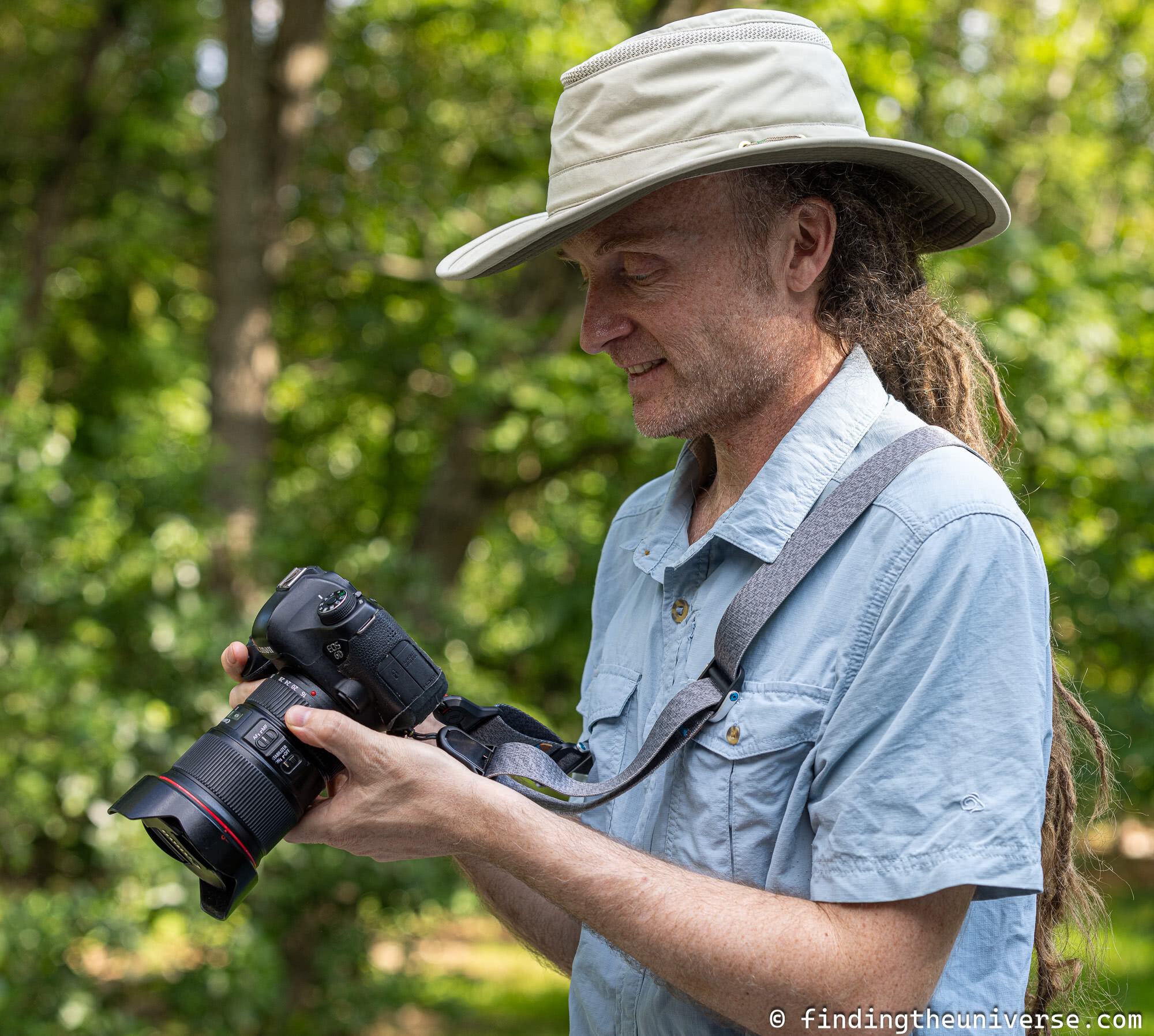

Peak Design Leash
If you’re a minimalist but you still want a high performing camera strap, then the Peak Design Leash is likely the strap for you.
This is the thinnest regular strap that Peak Design offers. As with the Slide and Slide Light, it can be configured as a sling, neck or shoulder strap. It includes the anchor link system but does not have a grippy section or padded area as the Slide straps do.
There are some other differences with Leash compared to the Slide straps. First, Leash is only 0.75″(19mm) wide. The max length of 57″ is the same, but you can actually make Leash shorter, down to 32.6″ (83cm).
Leash also comes with a mounting system so you can attach the camera either to the tripod plate, or to the side or top mounting points that many smaller cameras have.
On our Sony RX100 for example, there are small mounting points on either side of the camera body. The Leash strap comes with the hardware to set these mount points up with anchor links.
It actually makes more sense in my opinion to mount the Leash strap on the sides of the camera like this. The mounting plate for the tripod screw that comes with the Leash is a mini version, but even so it is likely to block your cameras SD / battery slot (it does on our RX100).
So that sort of negates the benefits of the easy access system if you have to remove the anchor plate when you want to change battery or memory card!
I think Leash is a good option if you want a really minimalist camera strap. I’d recommend it for smaller camera setups, such as compact cameras. This is especially the case if you plan to carry them around for a prolonged period of time.
I wouldn’t recommend Leash for a larger mirrorless or DSLR camera setup as whilst it can support the weight, the comfort wouldn’t be there.
See more about the Peak Design Leash strap here.
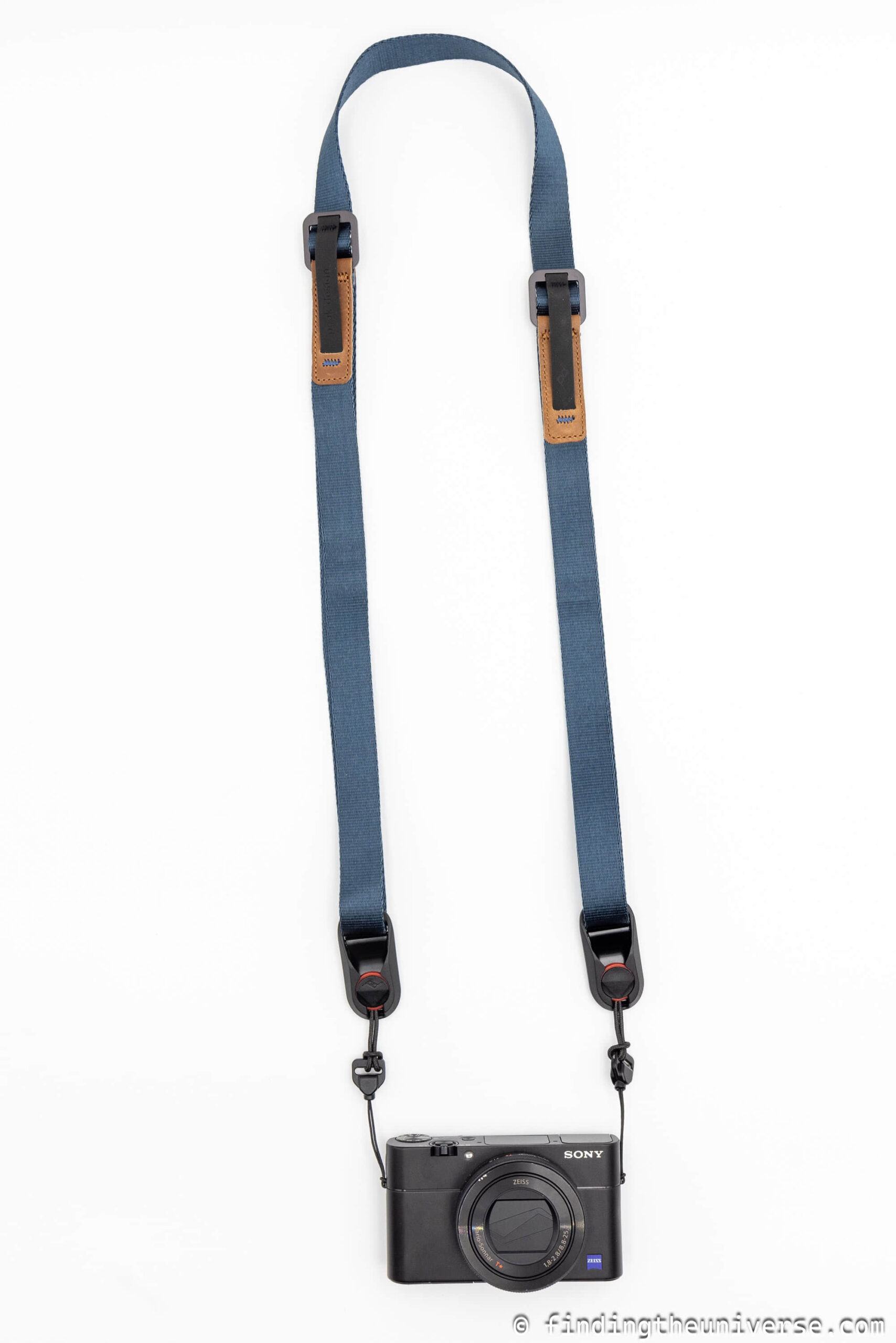

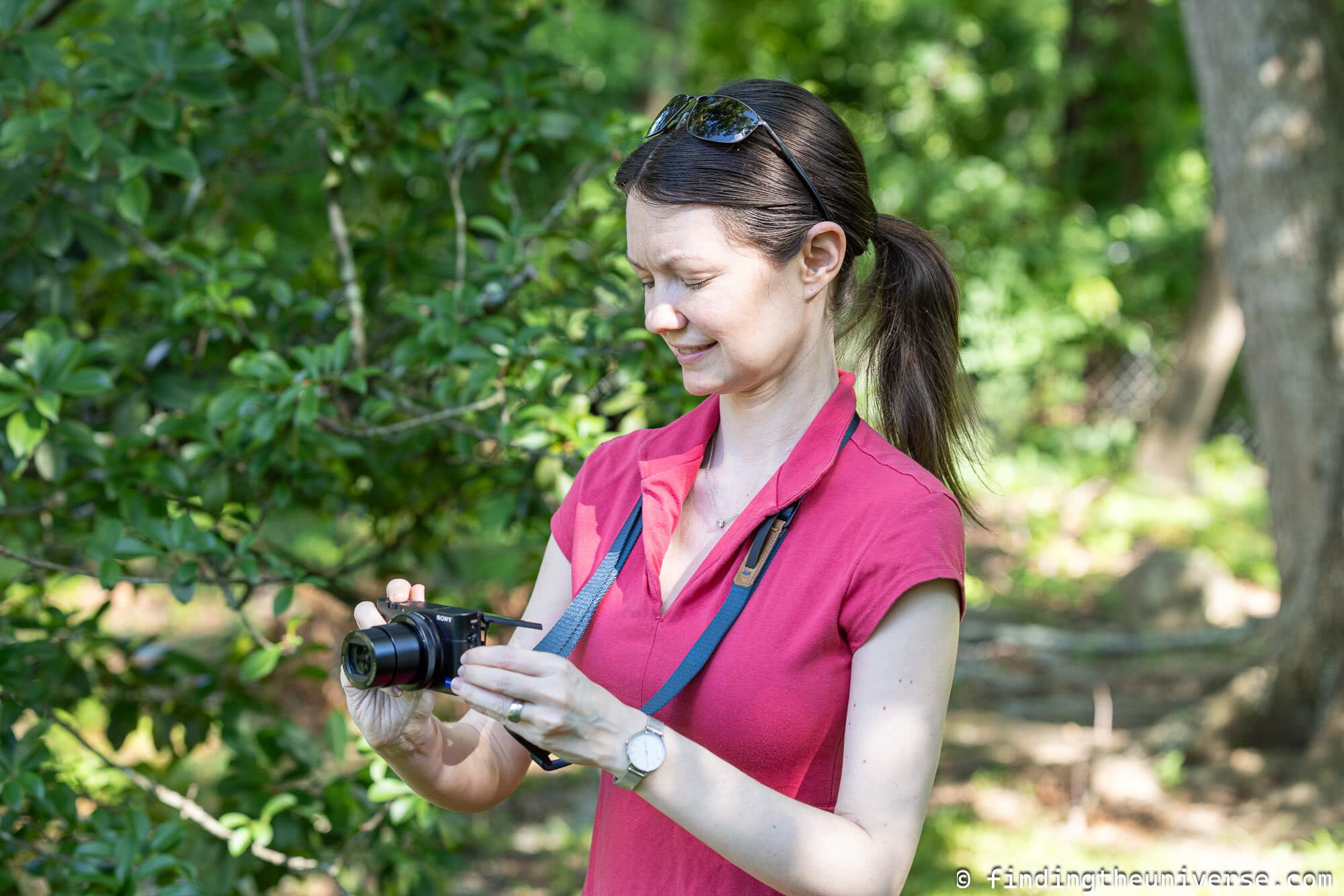

Peak Design Cuff Wrist Strap
Not everyone wants a long camera strap that goes around their whole body, and if you are one of those people, Peak Design has you covered with a number of options. The first of these is Cuff.
Cuff is a wrist strap which, as the name suggests, lets you put your camera on a strap which you secure around your wrist. And I do mean secure, as there’s an adjustable locking slider which lets you cinch Cuff around your wrist so it can’t slip off over your hand.
Of course, you don’t have to do that, but it’s probably a good idea if you do.
In terms of the strap itself, it is made of the same nylon webbing as Peak Design’s other straps. There’s no grip but there is a highlight area which goes around your wrist, which is available in either leather or a material called Hypalon which is vegan. Width wise it’s the same as Leash, at 0.75″ (19mm).
The strap also has a magnetic clasp, which cleverly lets you wear it as a bracelet when not in use as a camera wrist strap, which is pretty neat for when you are out and about.
In terms of what it can carry, because it uses the same material and anchor link system as the other straps, it can handle up to 200lbs (90kg) of gear as well.
So, if you don’t like to wear a big strap but still want to keep your gear safe when it’s in your hands, Cuff is an excellent option.
I’d say it’s better for folks who tend to put a camera away in a bag and take it out again regularly rather than wearing a camera over their body all the time.
We really like Cuff for our smaller compact camera
See more about the Peak Design Cuff strap here.
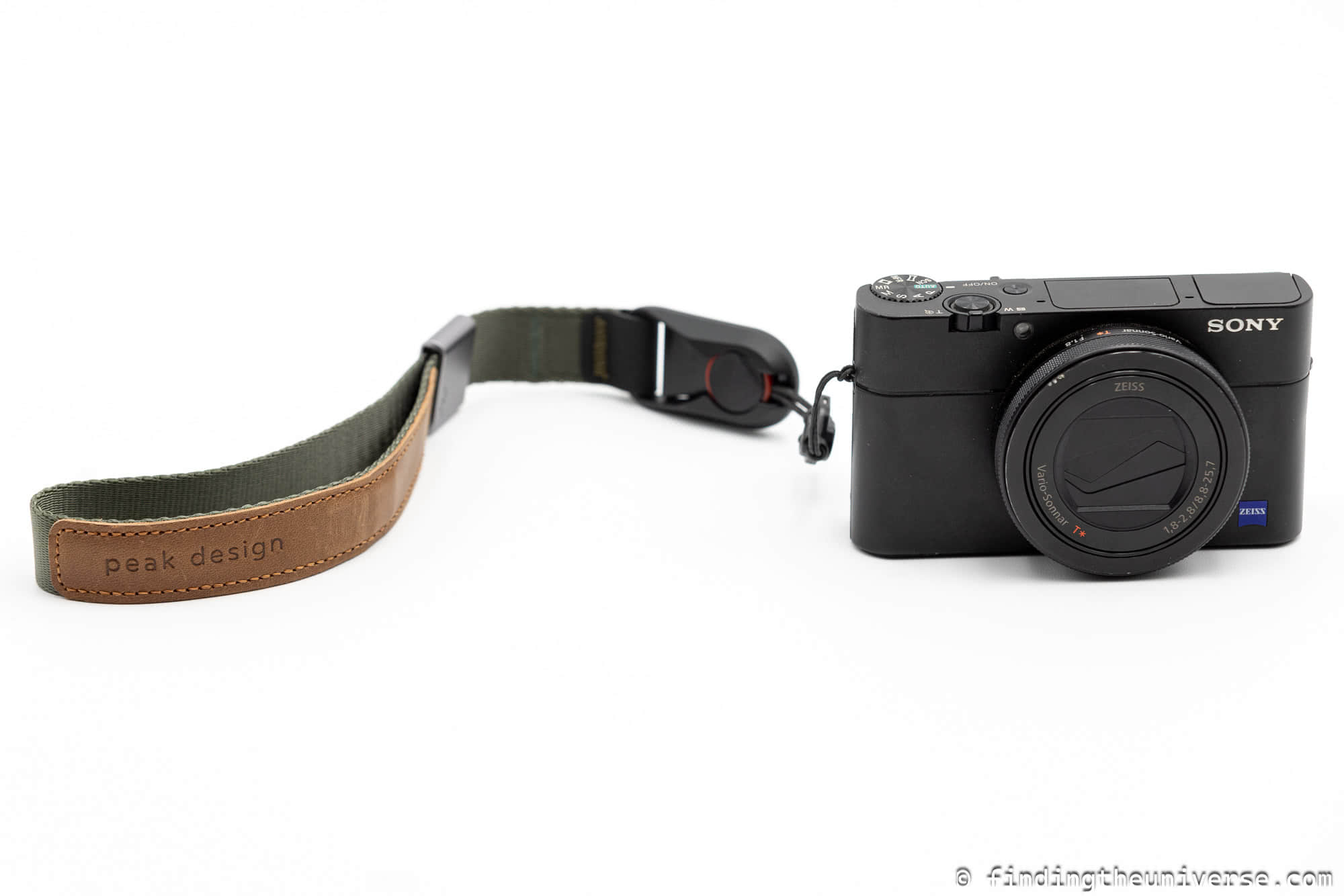

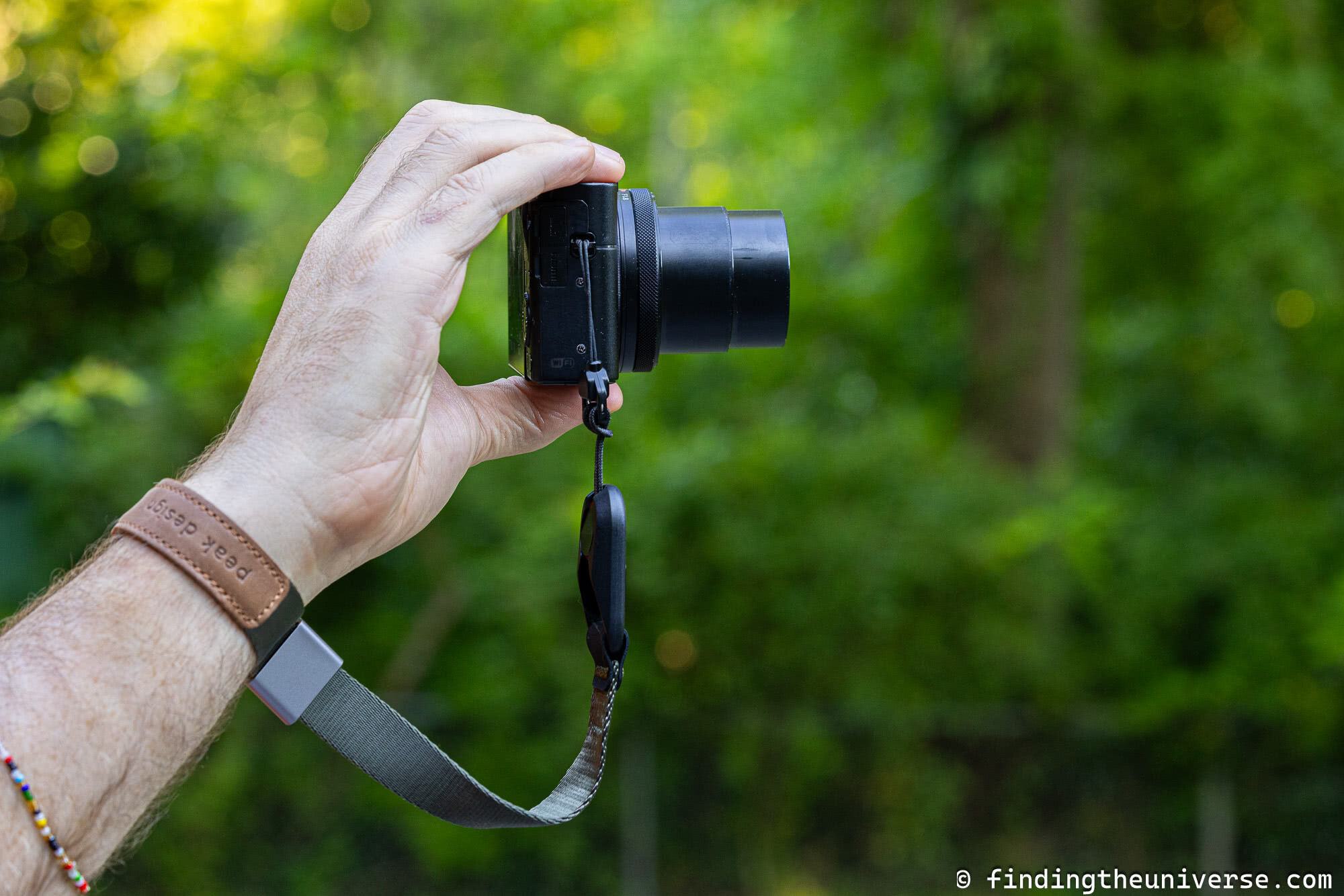

Peak Design Clutch Strap
Clutch is Peak Design’s hand strap. It’s basically designed to sit on the side of your camera and goes around your hand when you are gripping your camera.
This gives you more peace of mind when holding your camera, especially if you are using a heavier camera without a strap around you.
Clutch uses the same anchor link design at one end as their other straps, which attaches to the camera’s base using the included tripod compatible base plate.
I’ve had my Clutch for the same amount of time as I’ve had my Slide straps. I will admit that it took a bit of time to adjust to using it on my camera as initially my hand wasn’t used to having a strap around the outside of it when holding my camera.
However, I quickly got used to it, and then I found using a camera body without it felt odd!
I’ve actually had two versions of Clutch. The first version I had for a long time, but the strap where it attached to the camera wore through from friction over the years.
I contacted Peak Design and they sent me the newer version which replaced the version I bought. This features a different type of material at the point mine failed which I am pleased to report has not suffered from this issue.
Overall, I would say if you are looking for a hand strap for a larger camera, definitely consider Clutch. It’s a little large for smaller cameras, but obviously Peak Design has a solution for that issue in the form of the next product in this list!
See more about the Peak Design Clutch strap here.
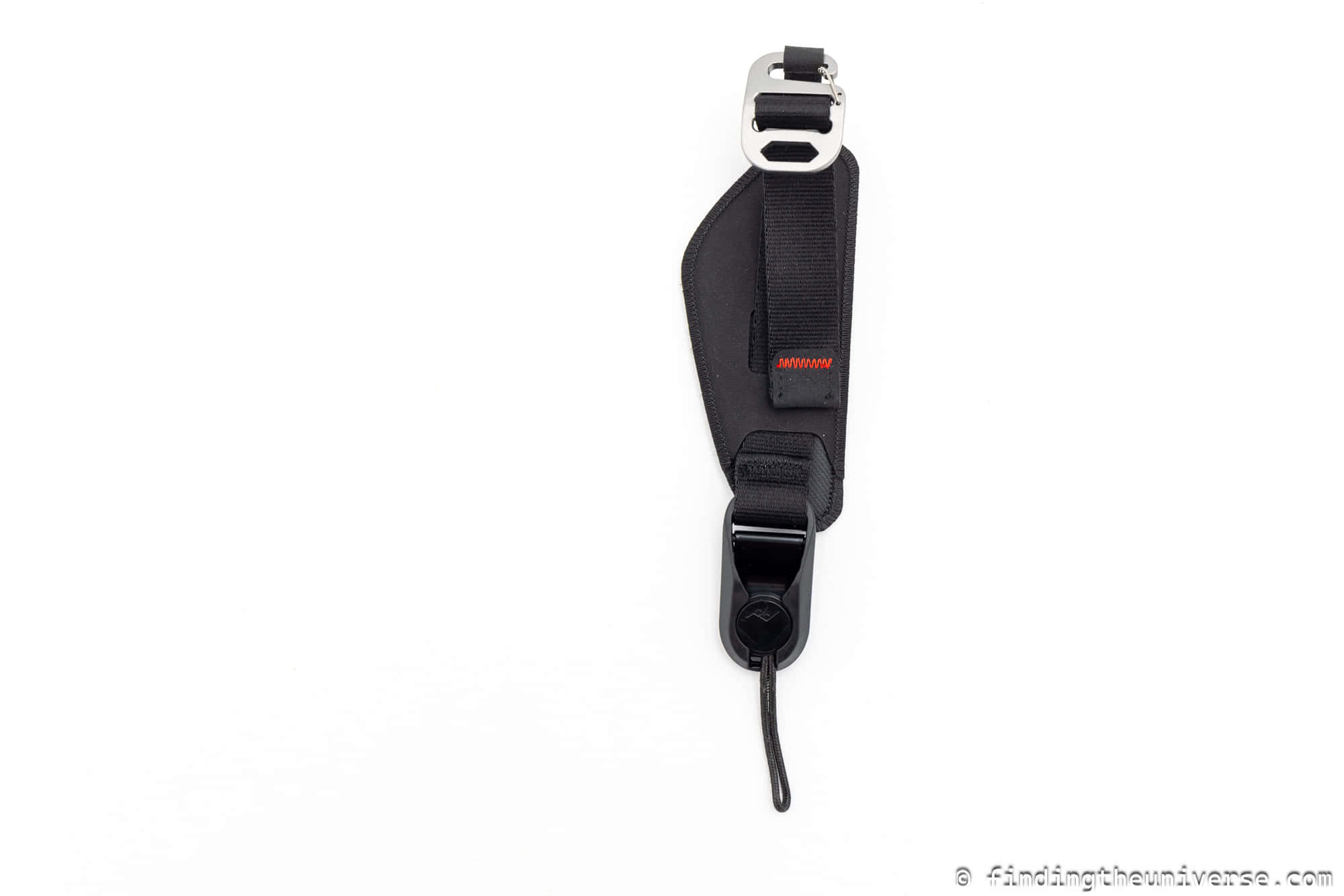

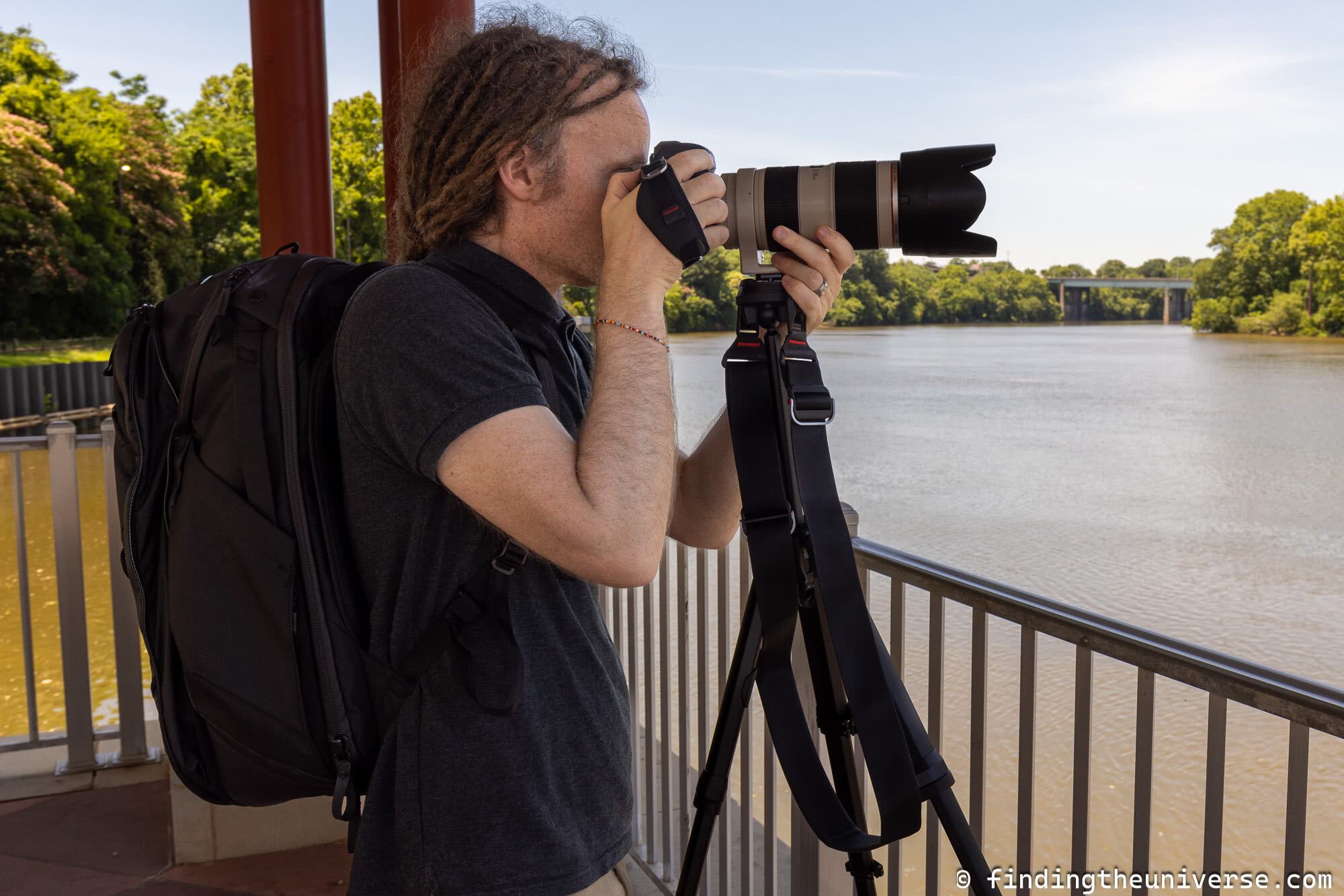

Peak Design Micro Clutch
Micro Clutch is basically a smaller version of the Clutch strap. It’s designed specifically for smaller mirrorless camera systems, with the idea being that instead of putting your whole hand in it, you only use it with between two and four fingers.
This results in a small and unobtrusive strap that still gives you the security of a hand strap.
This one doesn’t actually come with the anchor link system, however the base plate does have loop attachment points so you can use the supplied base plate with other Peak Design straps if you want to mix and match.
Overall, Micro Clutch is a good idea if you want a really small strap for your camera. Note that it’s not compatible with every camera. Helpfully, Peak Design has a camera compatibility guide for micro clutch which you can see here.
You can see more about the Peak Design Micro Clutch strap here.
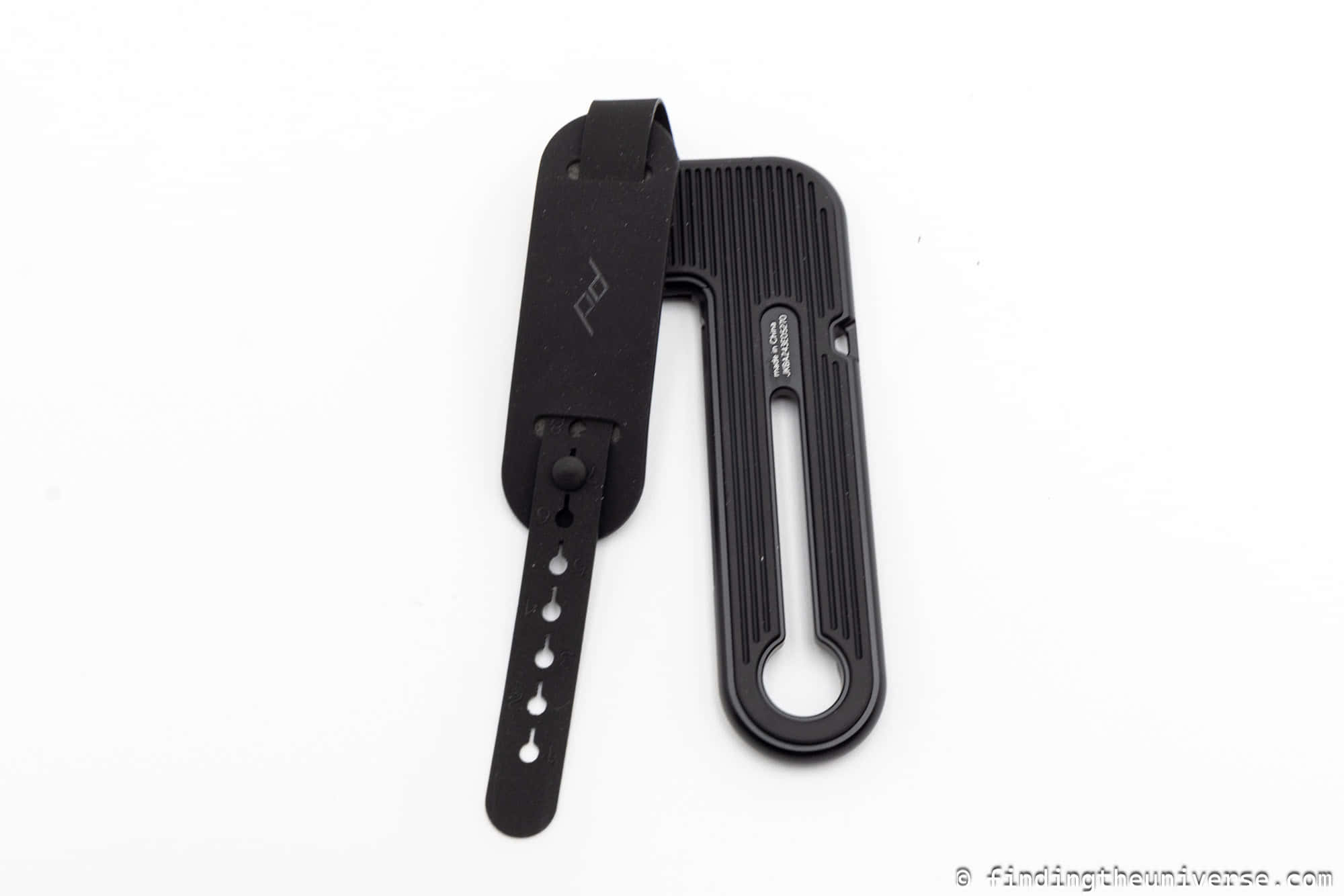

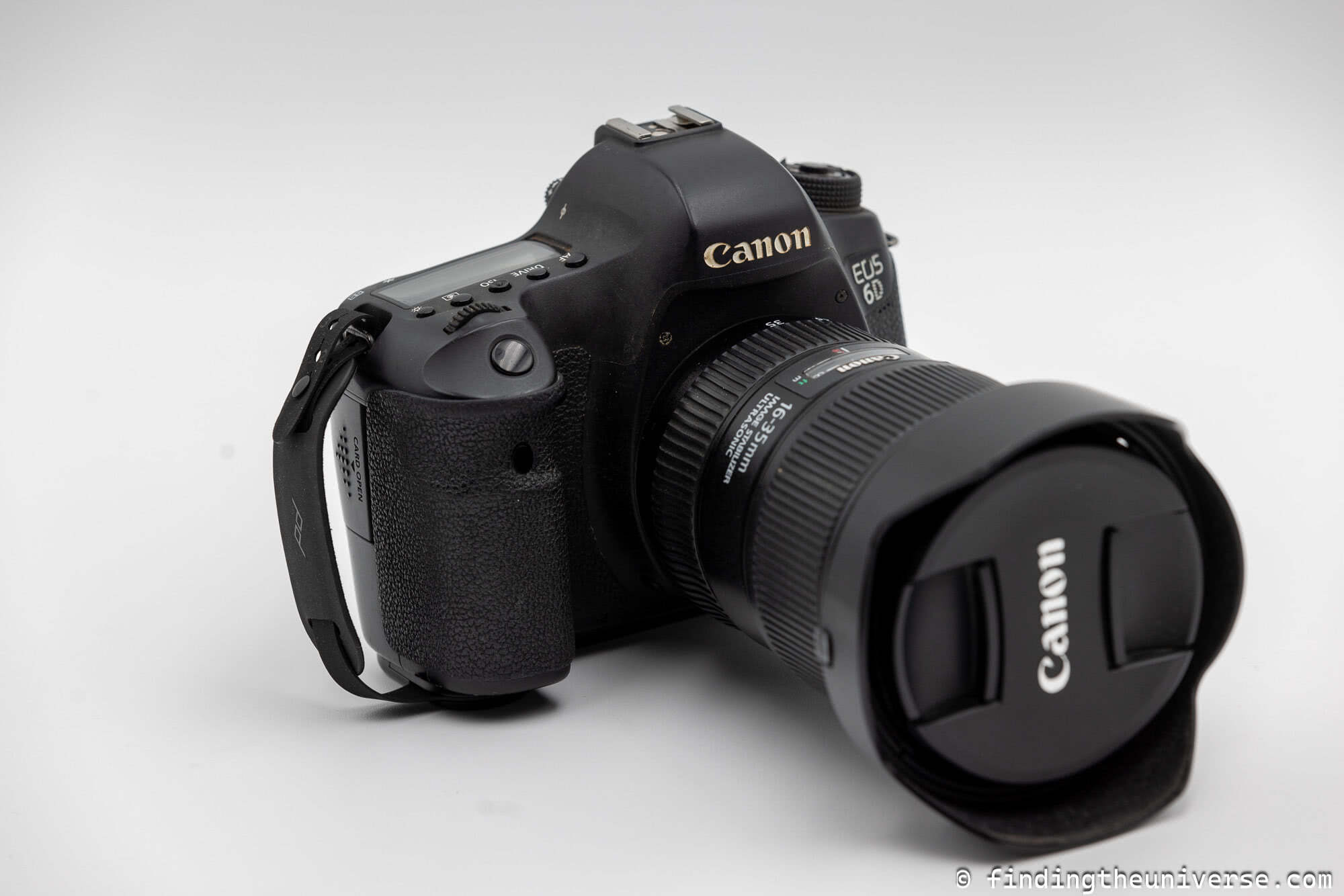

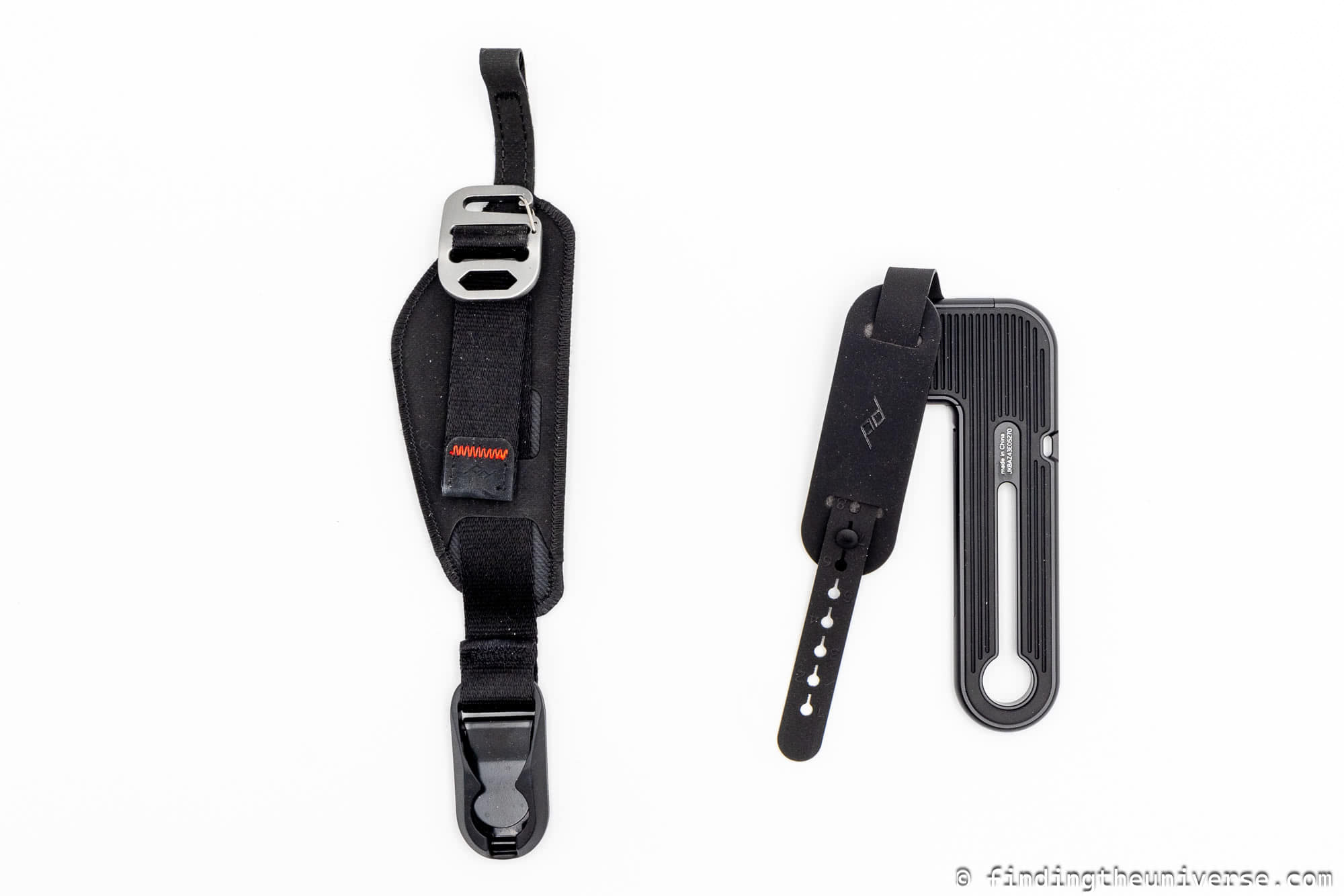

Peak Design Strap Features
As you can see, there are a number of Peak Design straps to choose from. Now I’m going to go through the key features of the straps.
Anchor Link System
The anchor link system is, in my opinion, what makes the Peak Design straps so unique and versatile.
The anchor link is the way that the majority of Peak Designs straps attach to your camera, binoculars, bag, or whatever else you want to carry. Once you have used it with your gear it’s honestly hard to imagine using any other system.
The anchor link is a quick release strap system which is made up of two parts.
The first part is the quick connector which is attached to the strap. Peak Designs straps all come with the quick connector already attached, but you can also buy them to attach to any existing camera strap you own.
The second part of the system is the anchor connector. This is a small round tab with a nylon loop. These are designed to easily attach to a range of products, including cameras, bags, and the Peak Design quick release tripod plate, which is how I attach them to my cameras.
Despite their diminutive size, the anchor system is rated to support 200lbs (90kg) of weight, which should be more than enough for even the heaviest camera setup. I’ve used mine for years and never had a failure.
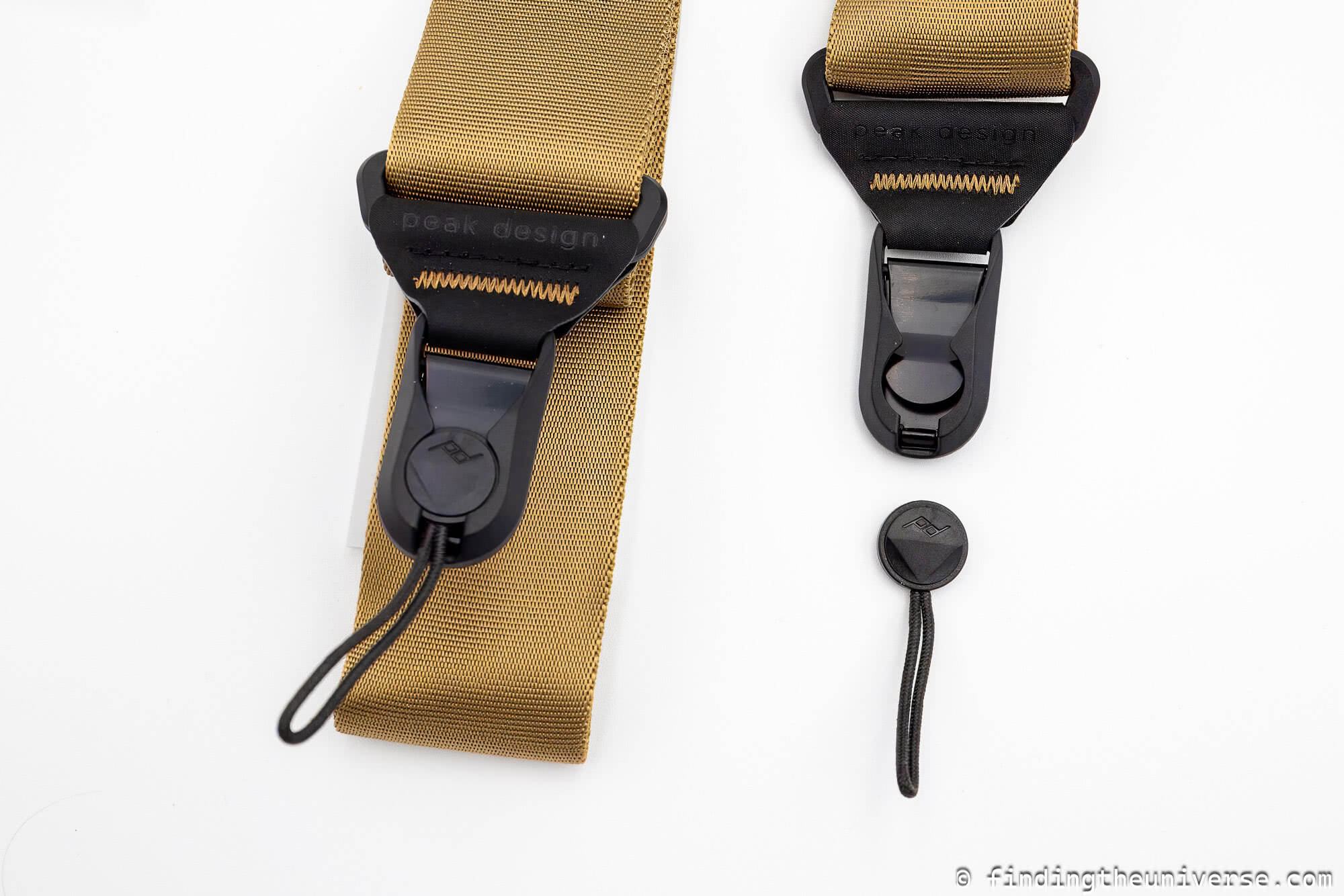



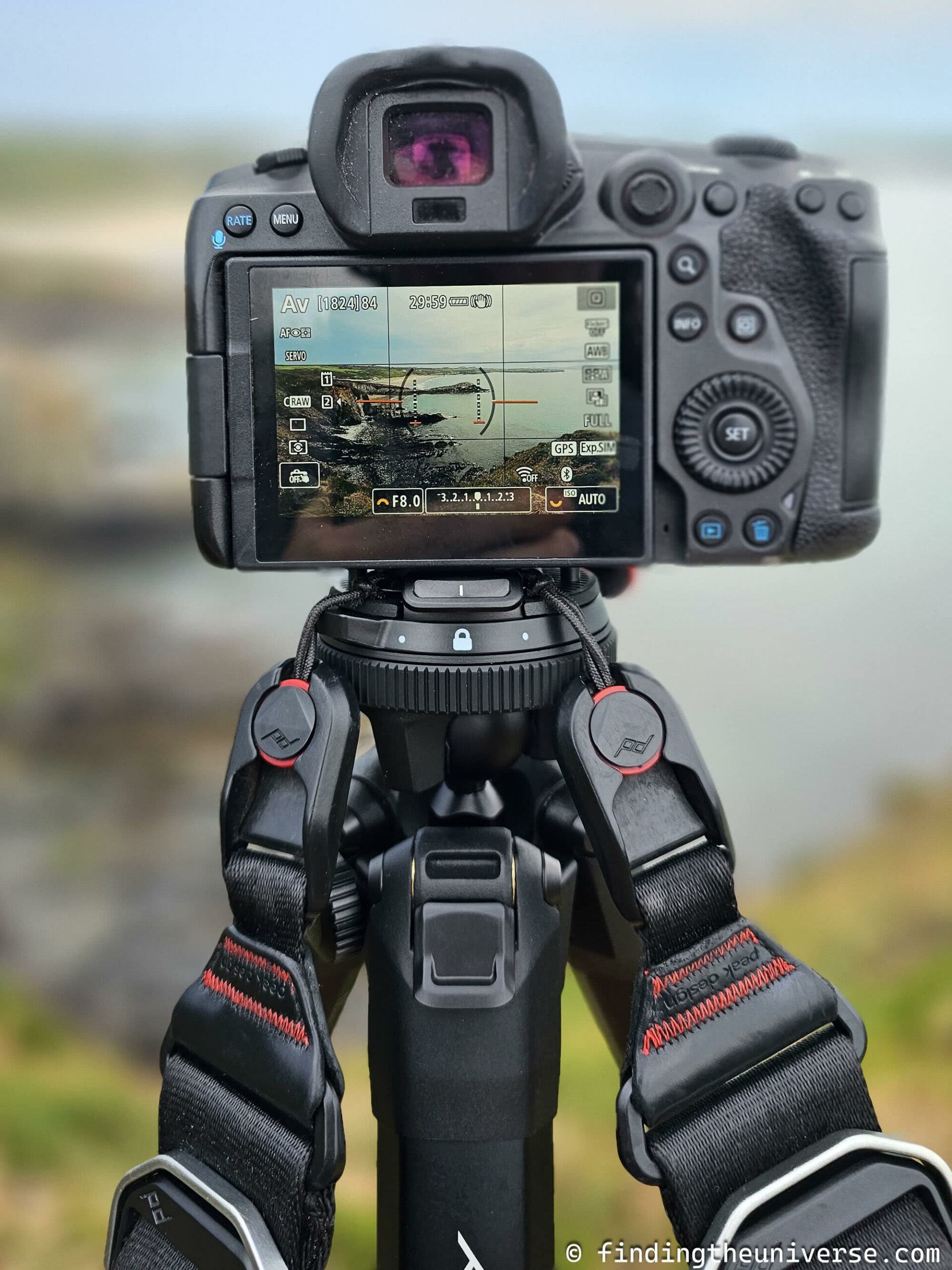

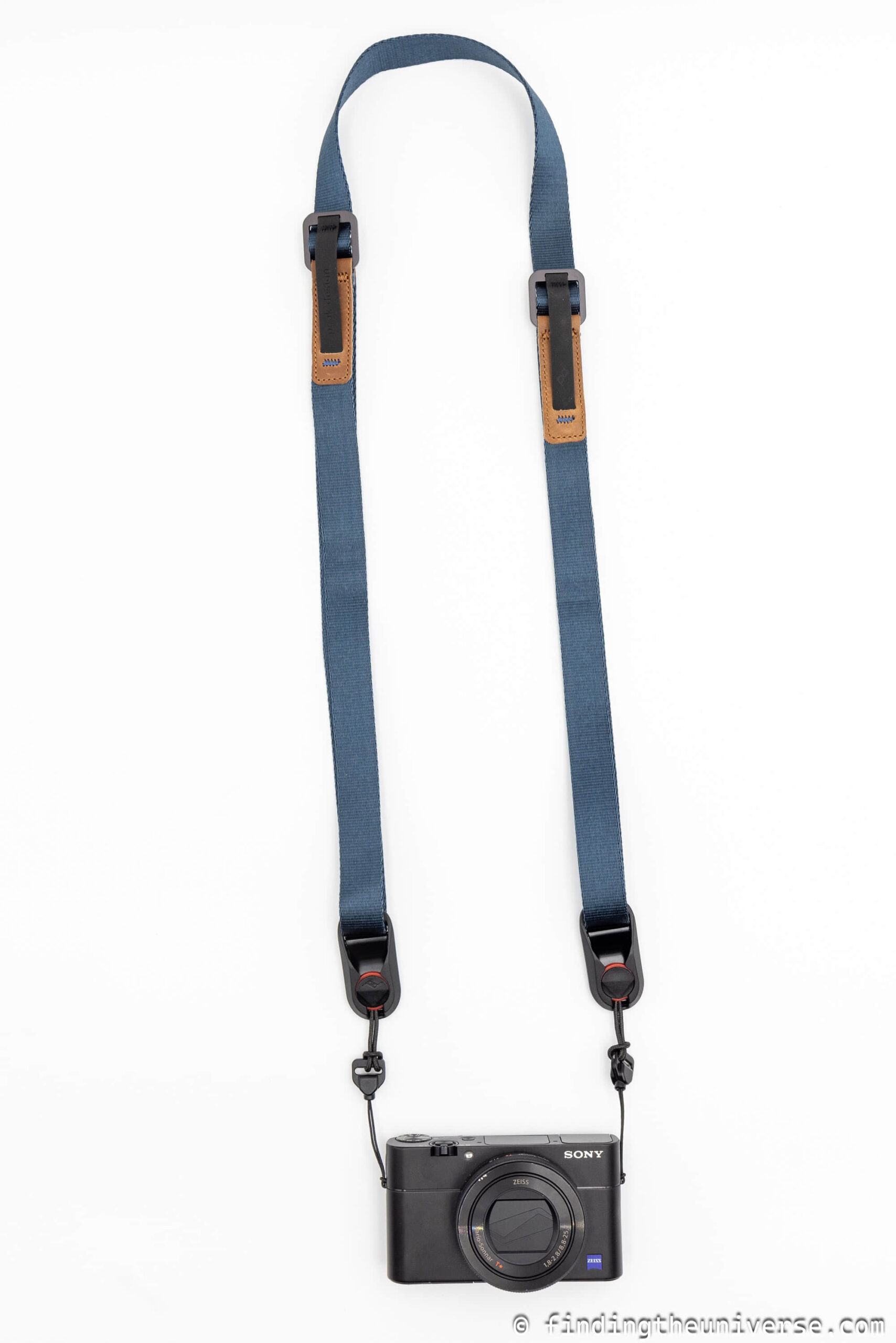

Smooth Nylon Webbing
Most of Peak Design’s straps are made from a strong nylon webbing, which is similar in texture and feel to a seatbelt strap. Seatbelt straps are obviously incredibly strong, given their intended purpose, and Peak Design straps are also incredibly strong.
What I really like about them is that they don’t seem to lose structural integrity if you happen to damage them slightly.
As an example, I was shooting at sunset in cemetery in Glasgow, Scotland one evening, and a curious fox came over to see what I was up to.
I put one of my cameras down on the ground and started taking pictures of the fox, at which point he decided he wanted to steal my camera in case it was edible. He did this by grabbing the Peak Design strap in his teeth and dragging my camera away.
Obviously, I stopped him, but not before he’d put some nice sharp teeth holes in my strap!
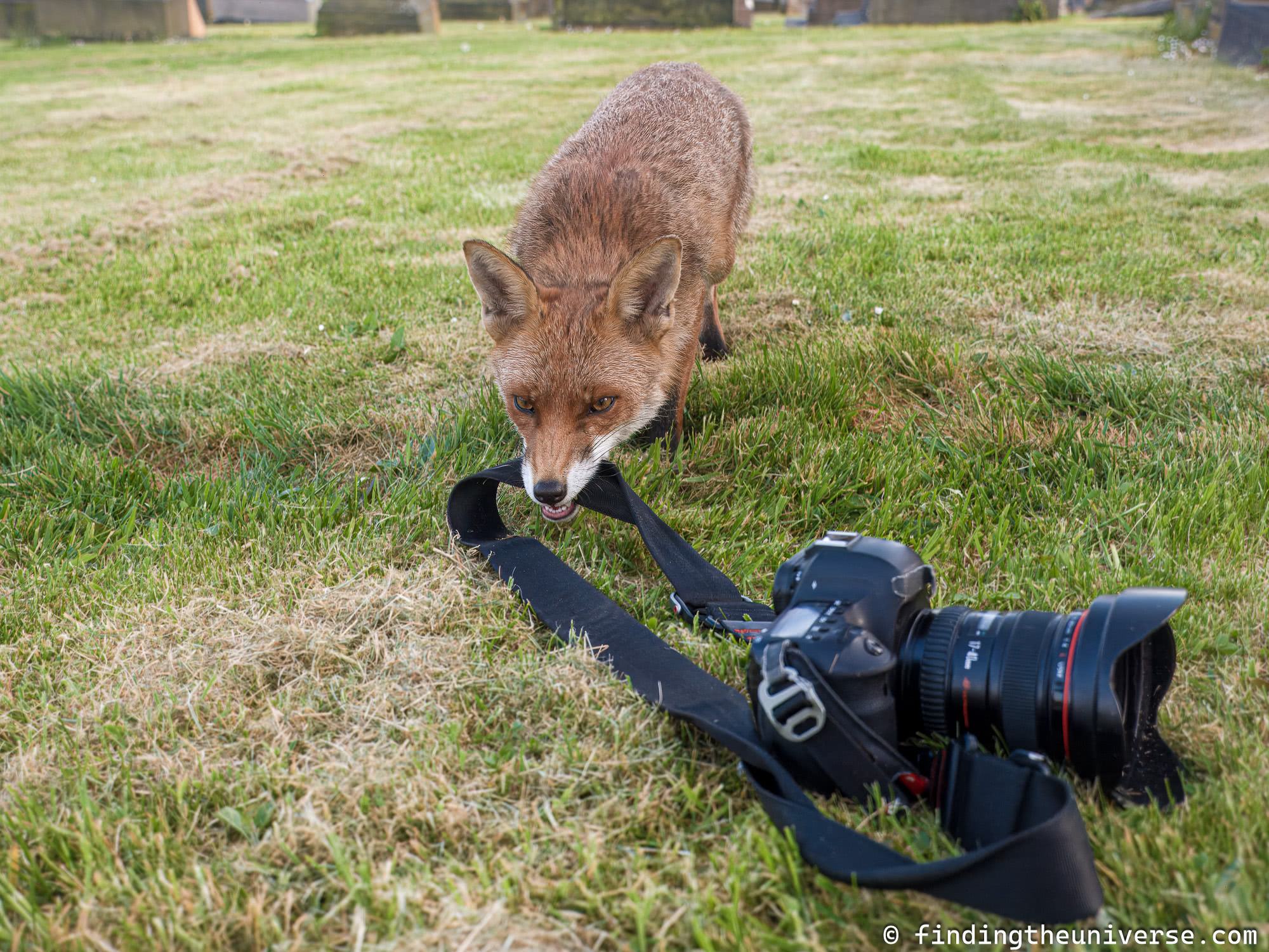

I’ve continued to own and use that strap for years since the fox incident, and the hole hasn’t impacted performance or gotten any bigger. It’s just a neat reminder of a cool encounter I had once!
Now, obviously I wouldn’t encourage anyone to damage their strap to see how it performs. But my experience has shown that the straps continue to perform well even after extended use, and some rather unusual damage!
The webbing on most of the straps also have a very grippy section which stops the straps from sliding around on your body as you move around.
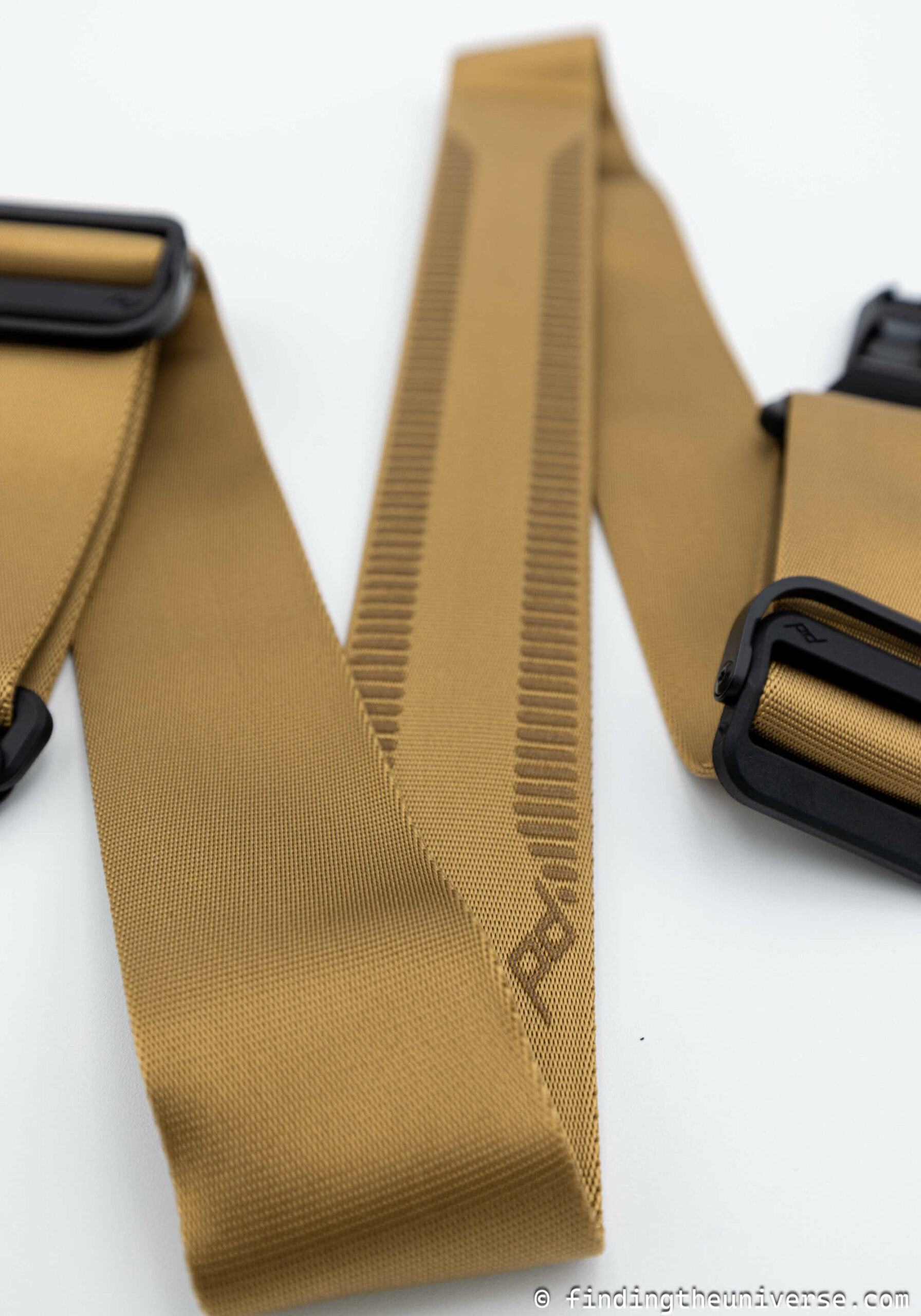

Lifetime Warranty
Peak Design offers a lifetime warranty for their products against manufacturing defects, and failures or breakages that render part or all of your product to become non-functional.
This doesn’t cover cosmetic blemishes, scratches, stains, or wear & tear. Nor does it cover failures or breakages due to misuse, neglect, or intentional damage.
In my case, I’m not sure the fox encounter would be covered, although given that the strap works great, that’s not been an issue.
I have had two occasions to use the lifetime warranty, and in both cases Peak Design honored it. The first was to replace my Clutch which wore through, and as I said, they had already identified and addressed this problem with the newer version. You can see the wear in the image below.
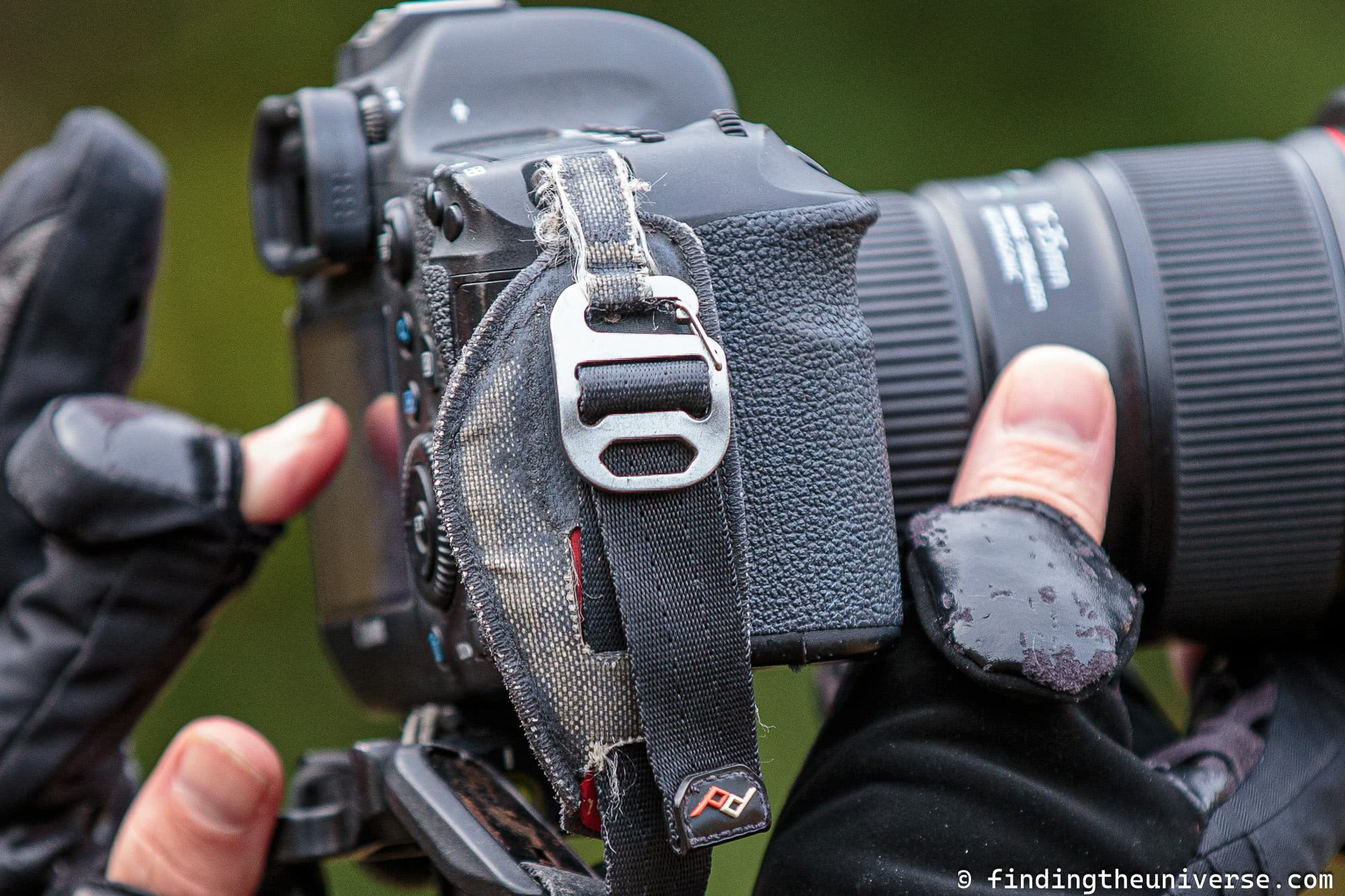

The other issue I had was with a limited edition red colored version of the Peak Design Slide.
This one had a different type of grip material to other versions I’ve owned, which was a sort of rubber compound.
This worked great until I took it trekking in the Ugandan jungle looking for gorillas. Unfortunately, a combination of heat and humidity, coupled with a lot of movement, caused the rubber to essentially melt all over my shirt.
The strap became a sticky mess (although it obviously still worked fine as a strap). You can see how this ended up in the image below.
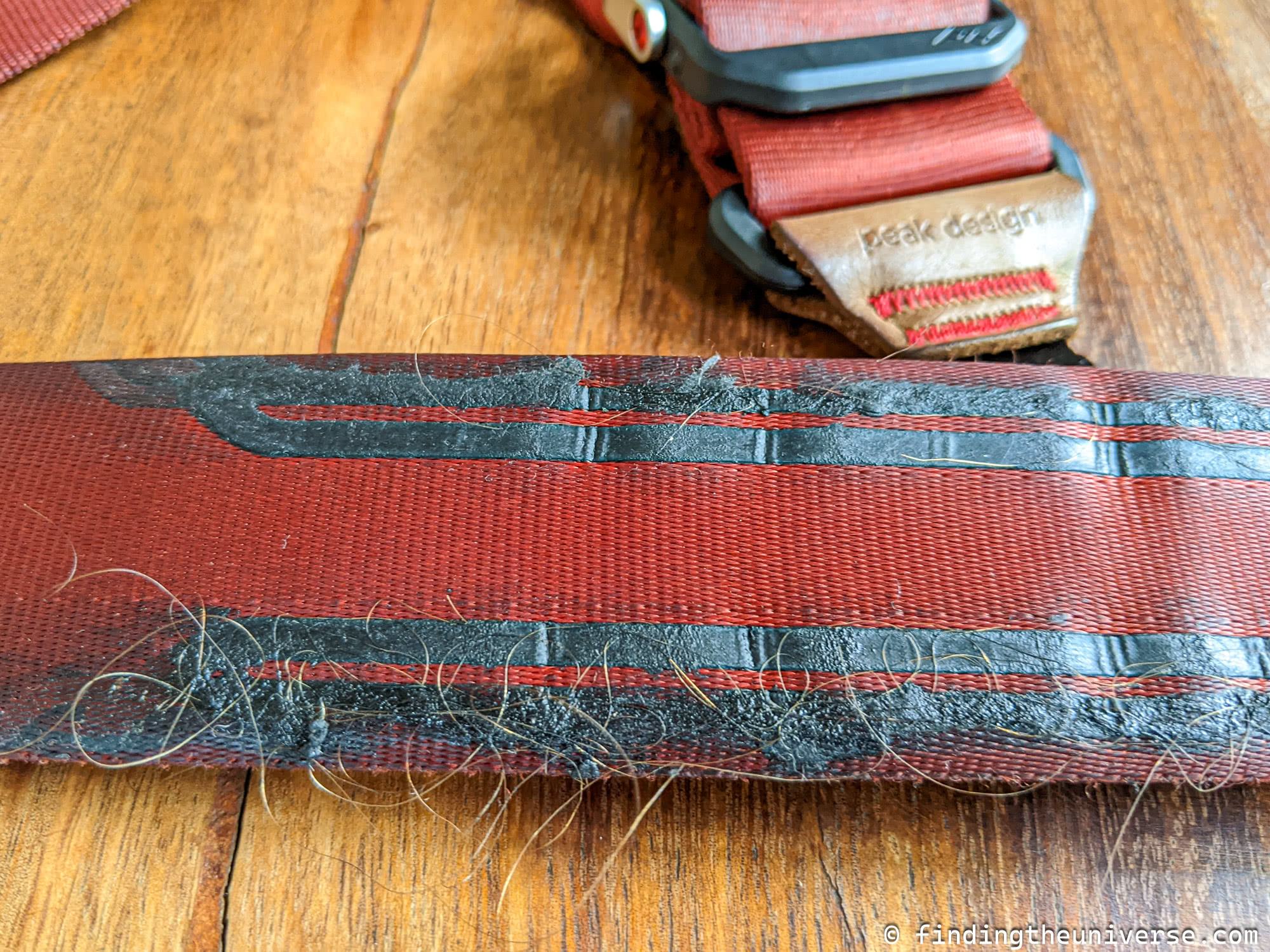

I contacted Peak Design about this, and they dispatched a replacement strap to me free of charge. They also let me know that they had since changed the material used for the grip area, so this problem wouldn’t happen again.
I’ve been using the replacement strap for a couple of years now and I can confirm it has held up well with no meltdowns yet, and the grip material is indeed totally different.
Adjustability
Obviously, everyone is built differently, so having a one size fits all strap isn’t going to work for everyone.
Peak Design’s straps can be adjusted. The exact mechanism and range of adjustment varies slightly depending on the strap model, but the main thing is that they can be adjusted to suit the requirements of the individual user.
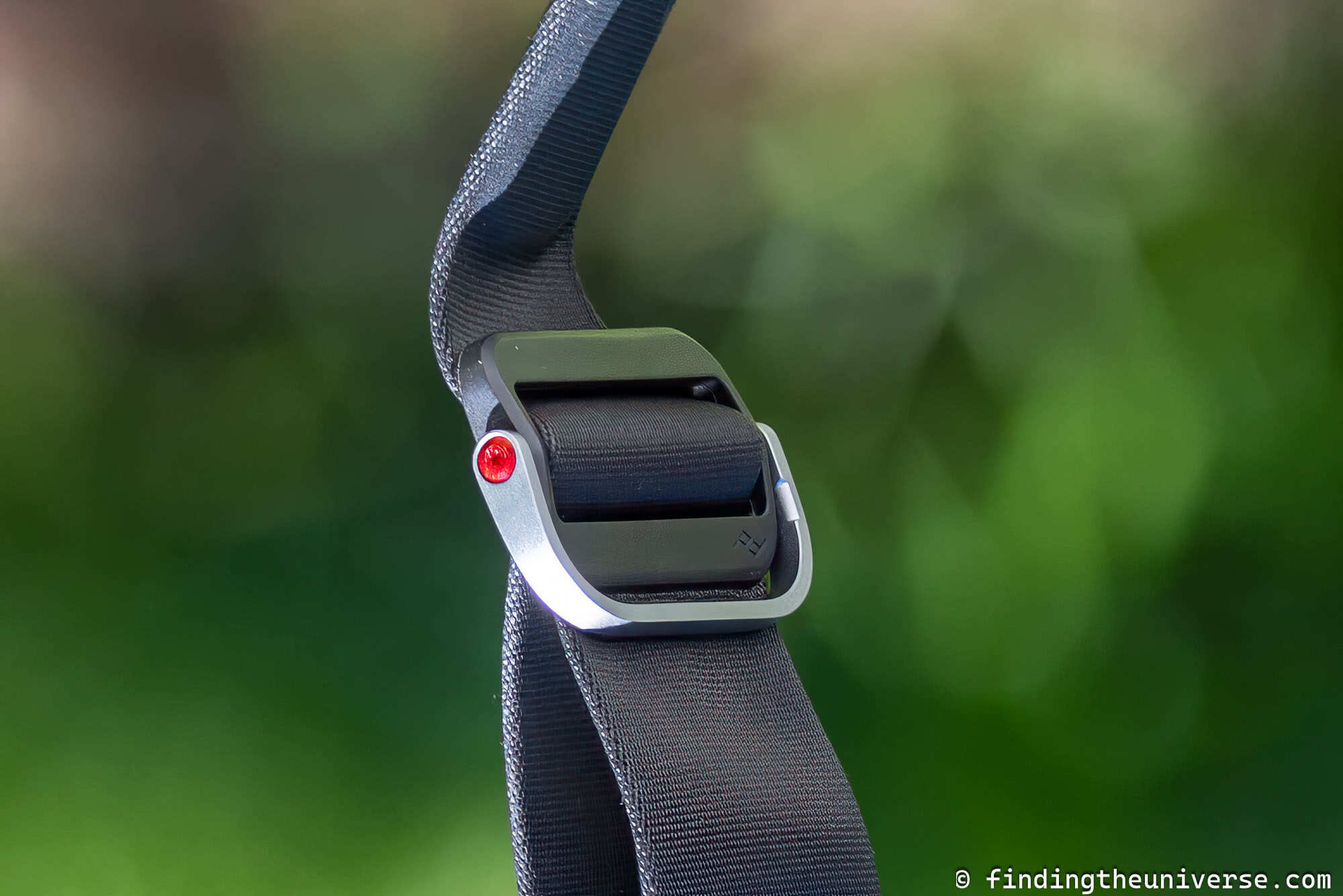

Strap Colors
Peak Design offer their straps in a variety of colors. Colors vary depending on the product.
In the case of Slide for example, you currently have a choice of classic black, sage green, midnight blue, ash grey, and coyote brown. They also occasionally do special edition straps of different colors.
Depending on the type of photography you do, you might prefer a different strap color.
For example, wildlife photographers will probably like the coyote brown color as it blends in nicely with camo style and natural colors. Black is a great color that work great for those that just want something that will go with everything and matches most camera bodies.


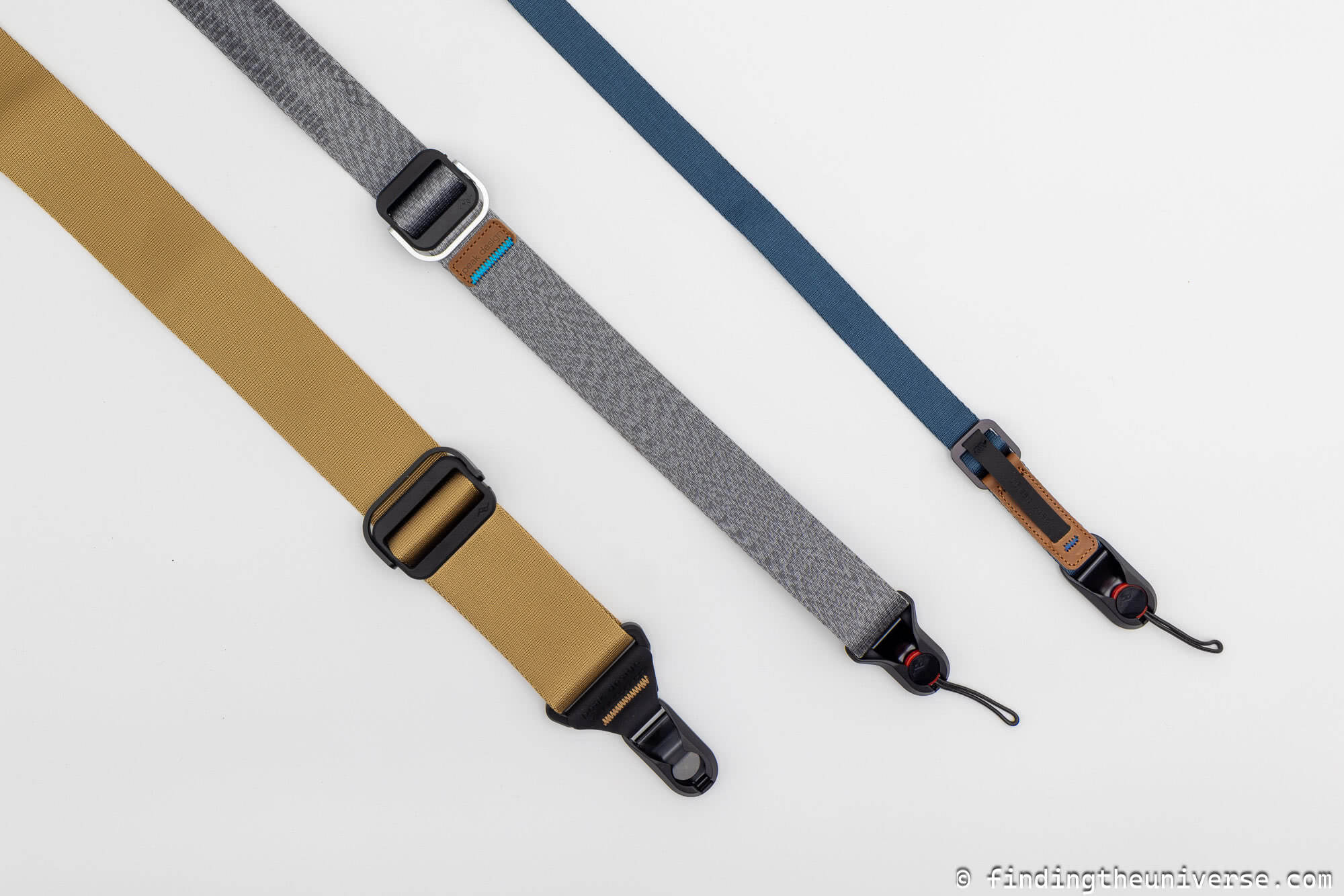

Peak Design Camera Strap Review
I’ll now go into some more detail regarding my personal experience using the Peak Design camera straps, including what I like, and areas I feel could be improved.
What I Like About Peak Design Straps
The thing I love most about my Peak Design straps is the anchor link system. I think it’s really clever, and it makes attaching and removing straps super easy.
Let me explain why I like it so much for my personal setup.
The way Jess and I typically wear our Peak Design straps is crossbody, like a sling. The strap attaches to the underside of the camera, where the tripod thread hole is.
This is a fairly common design feature for sling straps, where the camera is inverted around your midsection area.
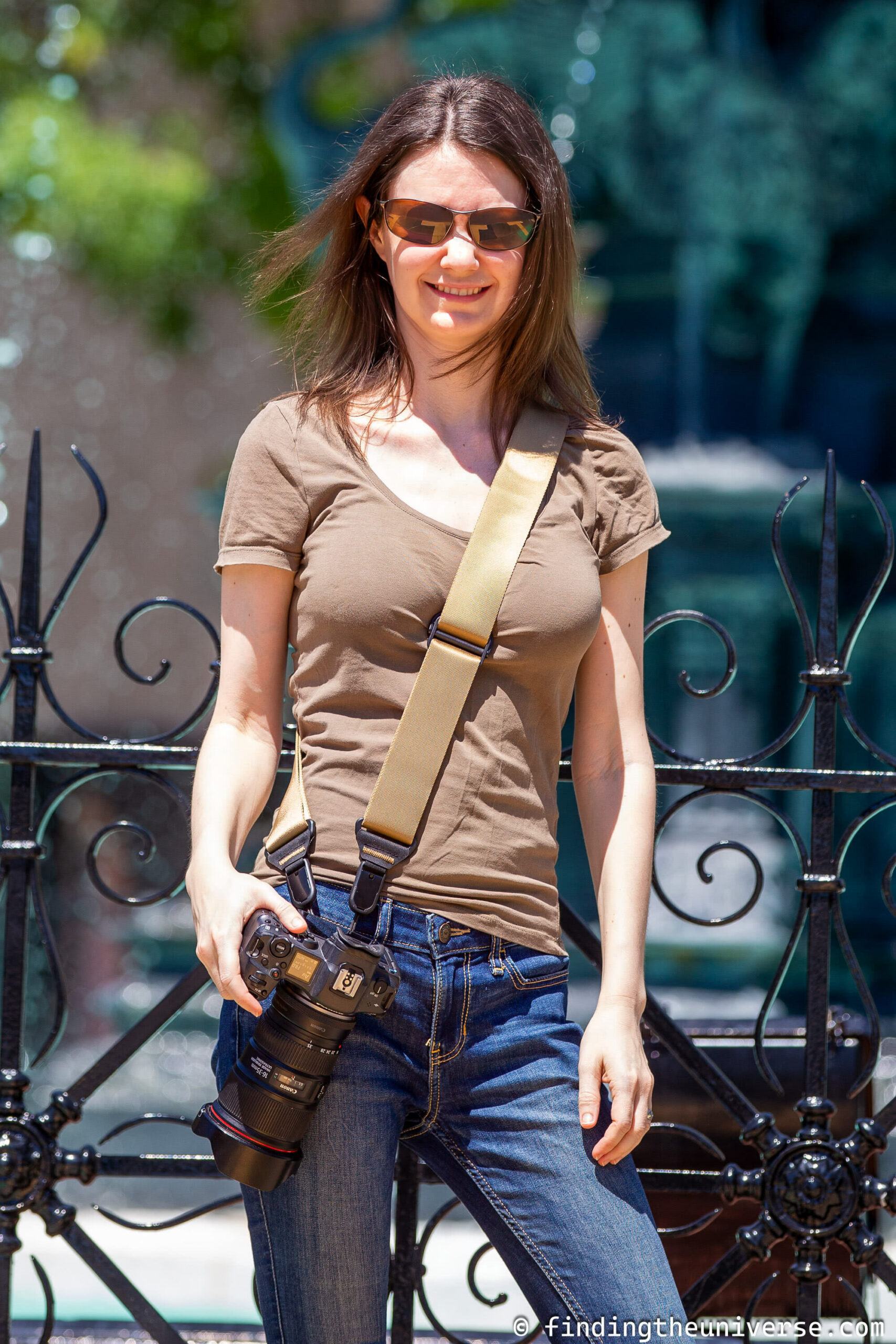

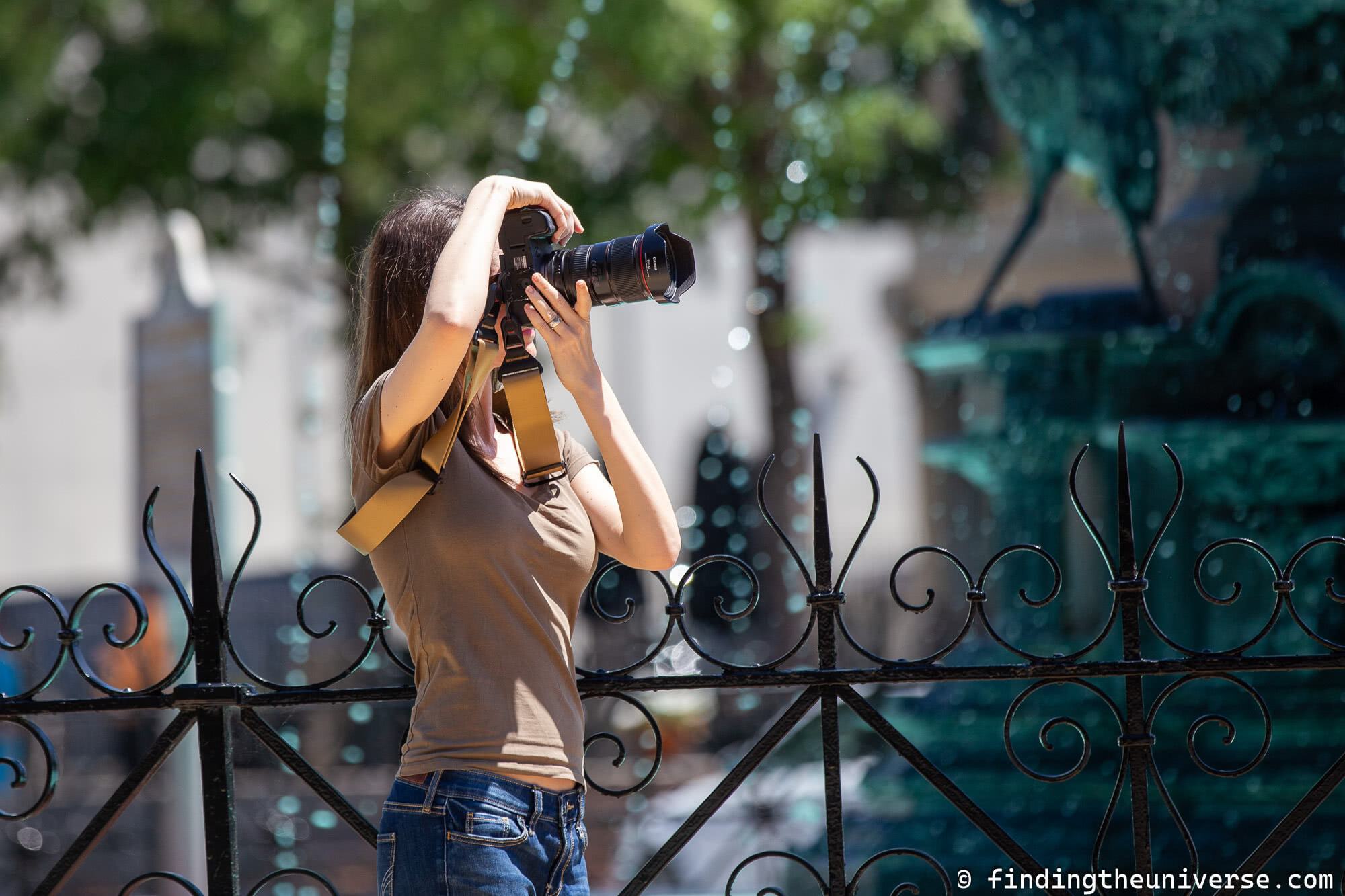

I find this to be a comfortable way to wear a camera for a prolonged period of time, certainly way more comfortable and practical than having it bouncing around on a neck strap.
The problem with many sling style camera straps that use the camera’s tripod mount point is that they require you to put an attachment into the camera’s tripod mount hole to attach the strap to.
This means you can’t attach it to a tripod without fully removing the strap system.
The thing is, I always have a quick release tripod plate attached to my camera bodies and telephoto lens collars. I use a tripod a lot (see my reasons why you need a tripod here for why), and for ease of use I exclusively use tripods which have a quick release plate system.
This means that I attach a special tripod plate to the base of the camera, which means I can attach my camera to a tripod very easily without having to screw or unscrew things.
So you can see the conundrum. I want a strap system I can leave on all the time, that uses the tripod mount point on my camera, but also lets me use a quick release tripod plate system.
Thankfully, the Peak Design system does just that. By using the tripod compatible Peak Design mounting plate on my camera, I can attach my camera to any Arca compatible tripod head (Manfrotto compatible plates are also available) without having to remove the strap system. It’s seamless and easy to use.
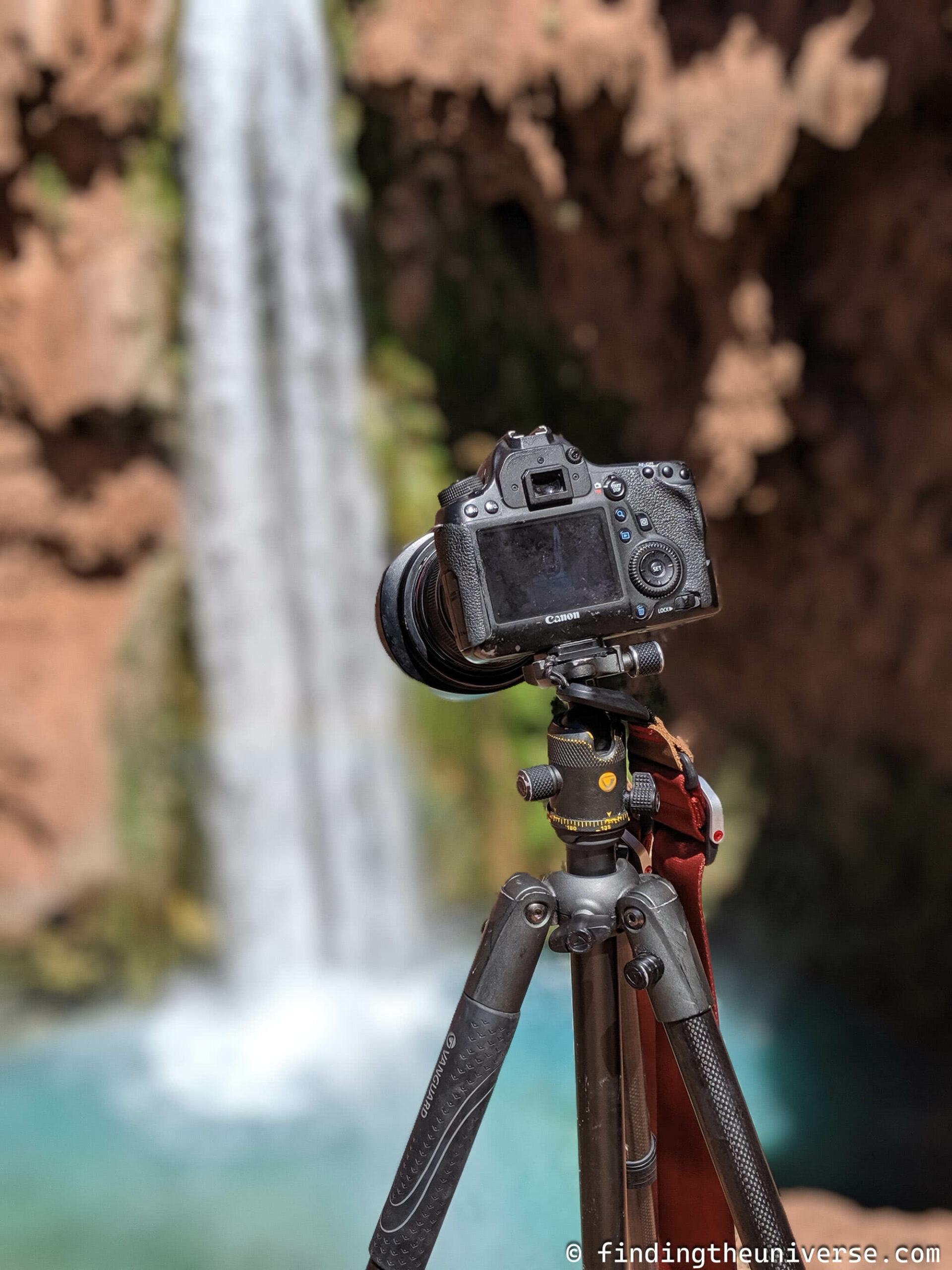

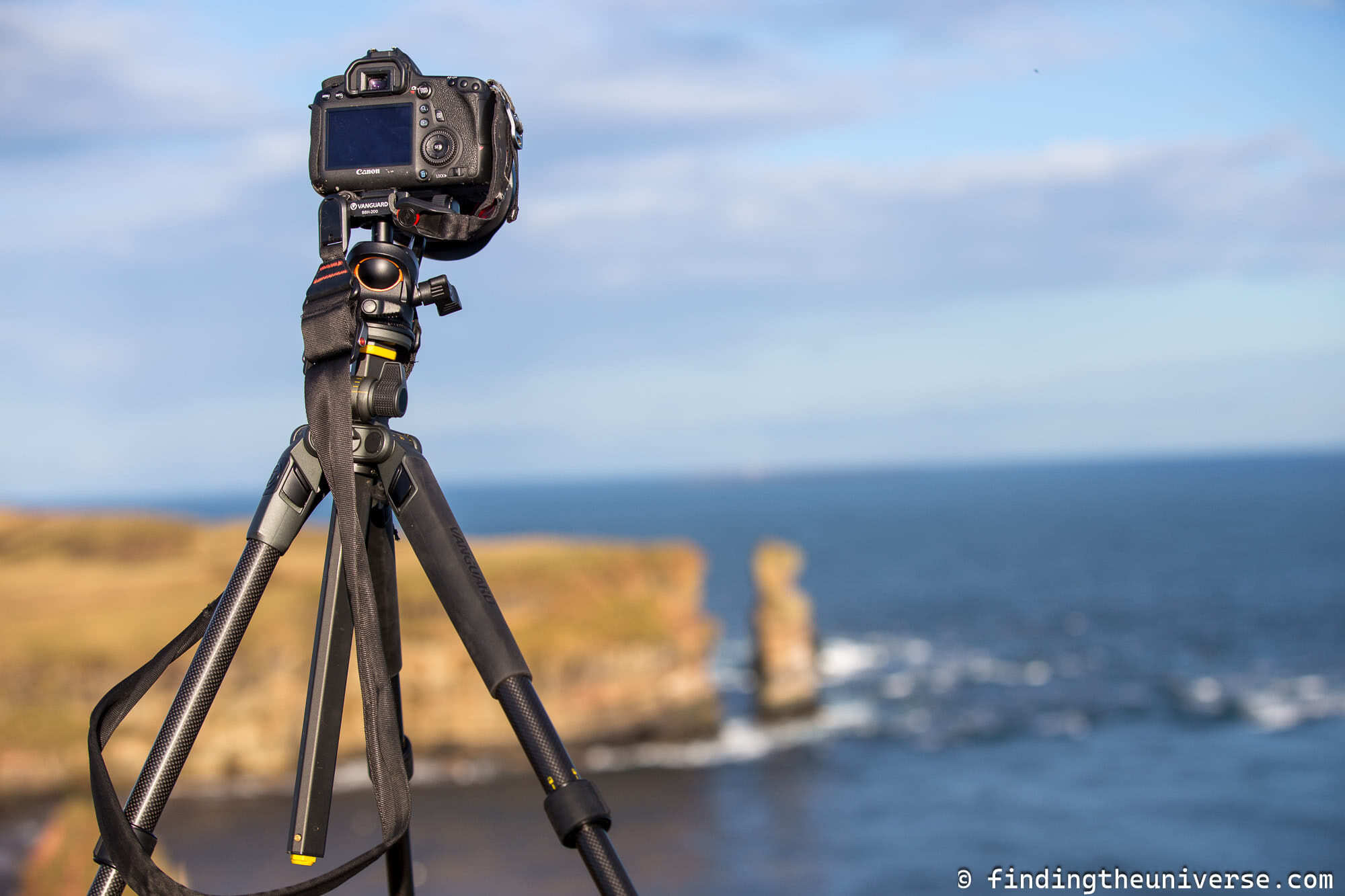

The flexibility and ease of use of the quick release system is also great. For example, I also have a pair of large telephoto lenses, where I prefer to attach the strap to the tripod collar rather than the body of the camera, as it is more balanced that way when I carry the camera.
With the quick release anchor system, I just need to have anchor connectors on the lenses tripod collar.
When I switch lenses from a wide angle to a telephoto, I can quickly move my Peak Design strap from the camera body anchor connectors to the telephoto anchor connectors. I can even use a seperate strap, and just carry the telephoto lens over my other shoulder if I want.
Of course, the flexibility continues. You can have anchor points on the camera’s top strap connector hooks if you want. Pretty much every camera out there has standard strap connecting points on the upper body of the camera where the standard strap that comes with the camera attaches.
So if you put anchor connections here, you can go from carrying your camera sling style, to carrying it the more traditional way around your neck, or over your shoulder.
Ok, that was a lot about the Peak Design anchor system. What else do I love about the Peak Design straps?
Well, obviously they are really comfortable. The padded section of the strap is comfortable, and I have literally worn mine for many hours on long hikes without feeling uncomfortable or like it’s rubbing in any way.
If I’m shooting events, or any other situation where I want easy access to a couple of lenses at the same time, I usually wear two straps, crossbody. This gives me easy access to a camera on each hip, cutting out the time needed to change lenses, which could be time where I’m missing a shot. That’s also incredibly comfortable.
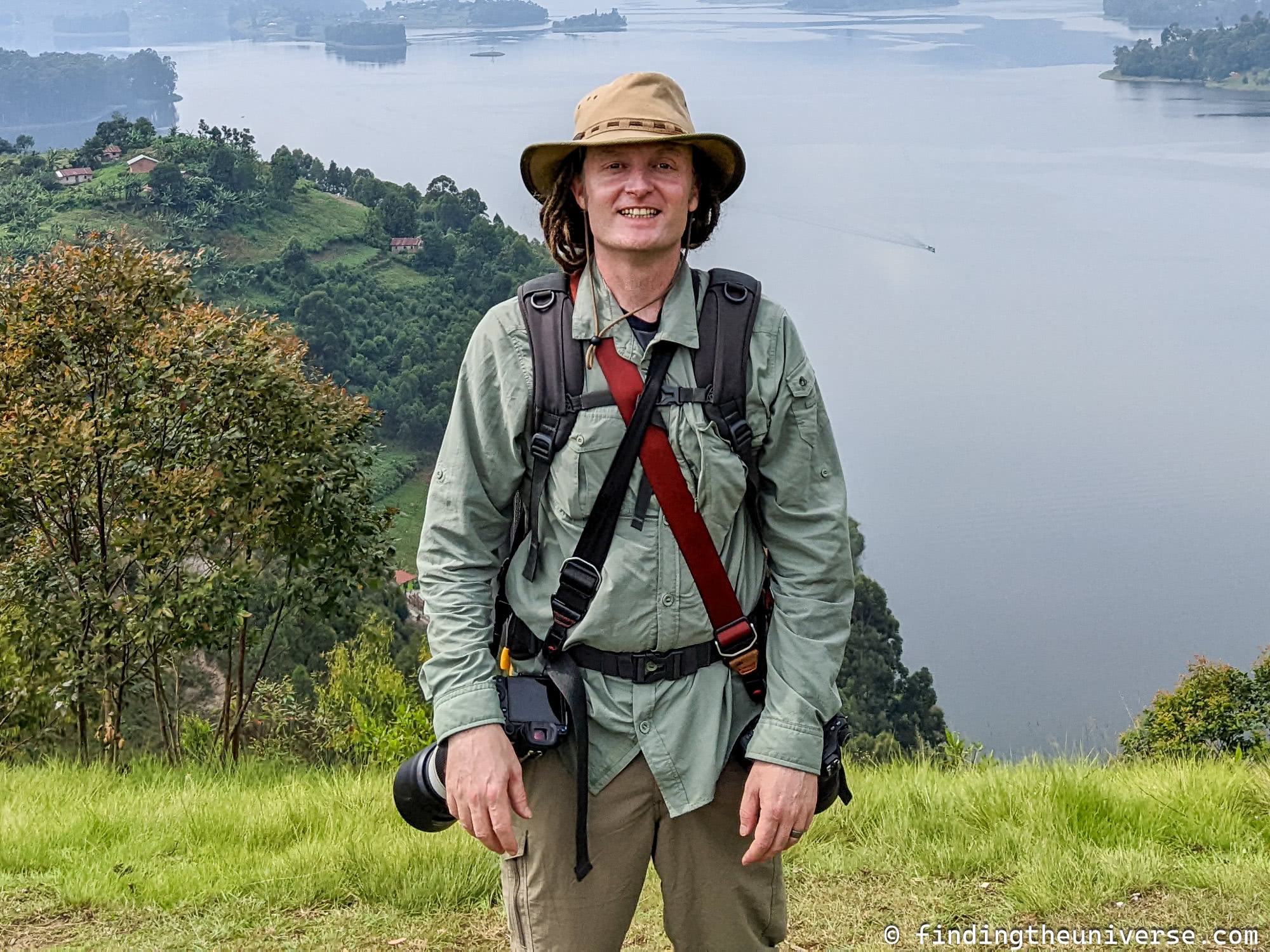

I also like that the straps are easy to adjust, and that they just work. My experience with customer service has also been great when I needed it.
Obviously, no-one wants a product to have issues, but for a company to rise to the occasion and solve the problem as they have done every time, speaks volumes in my book.
How Could Peak Design Improve their Straps?
What I like about Peak Design is that they are always improving on their products based on customer feedback. For the most part, the new version of the product replaces the old version of the product.
Most upgrades are iterative, so you don’t necessarily need to upgrade if you already own the product.
However, if you are a new user, you can be confident knowing that you are getting the best version of the product to date. With my example of the strap that melted into my shirt, that problem was addressed with a new material.
However, not all the changes are necessarily upgrades.
As an example, when I first bought my Peak Design Slide straps, they came with a tripod compatible plate. This meant that I could attach them to my camera and use them with a tripod straight away.
Unfortunately, the majority of their straps now only come with an anchor mount which is not compatible with tripod quick release plates. So, you have to buy that part separately, with both an Arca compatible plate and a Manfrotto RC2 compatible plate available.
Now, if you happen to buy a Peak Design travel tripod, this does come with the necessary plate. So maybe now that Peak Design also make tripods, they feel it makes more sense to bundle the tripod plate with the tripod. Additionally, as they can’t tell what kind of tripod plate the end-user requires, sending them an incompatible plate isn’t a great customer experience.
Still, I liked it when I got my Arca compatible plate when I first bought my Peak Design Slide strap as it let me use the strap directly with the tripod I had at the time without needing to fork out for more accessories. So I would like to see it as an option perhaps at checkout for a small upgrade cost even if it’s not included again.
Another area that has concerned some users of Peak Design straps is that the adjustment mechanism is a metal loop, and I have seen reports that these can scratch a camera body when packed in a bag. Personally, I’ve not had this problem, but my camera bodies get pretty banged up anyway!
However, if this is a concern, you might want to pack the strap separately.
Finally, in terms of improvements, it might be nice to see a system for carrying two cameras that doesn’t involve just having a “X” shape of straps across my body. Some camera strap systems offer a dual carry system which is more like a body harness, and I’d be interested to see if that’s something Peak Design could offer.
That’s just an idea rather than a criticism though as I’ve honestly been comfortable wearing the two straps crossbody.
Other than the above, I’ve not got much else to say about the Peak Design strap system that needs improvement! Obviously, they are relatively expensive as straps go, but I do feel you are getting a well-made and quality product that will last a long time.
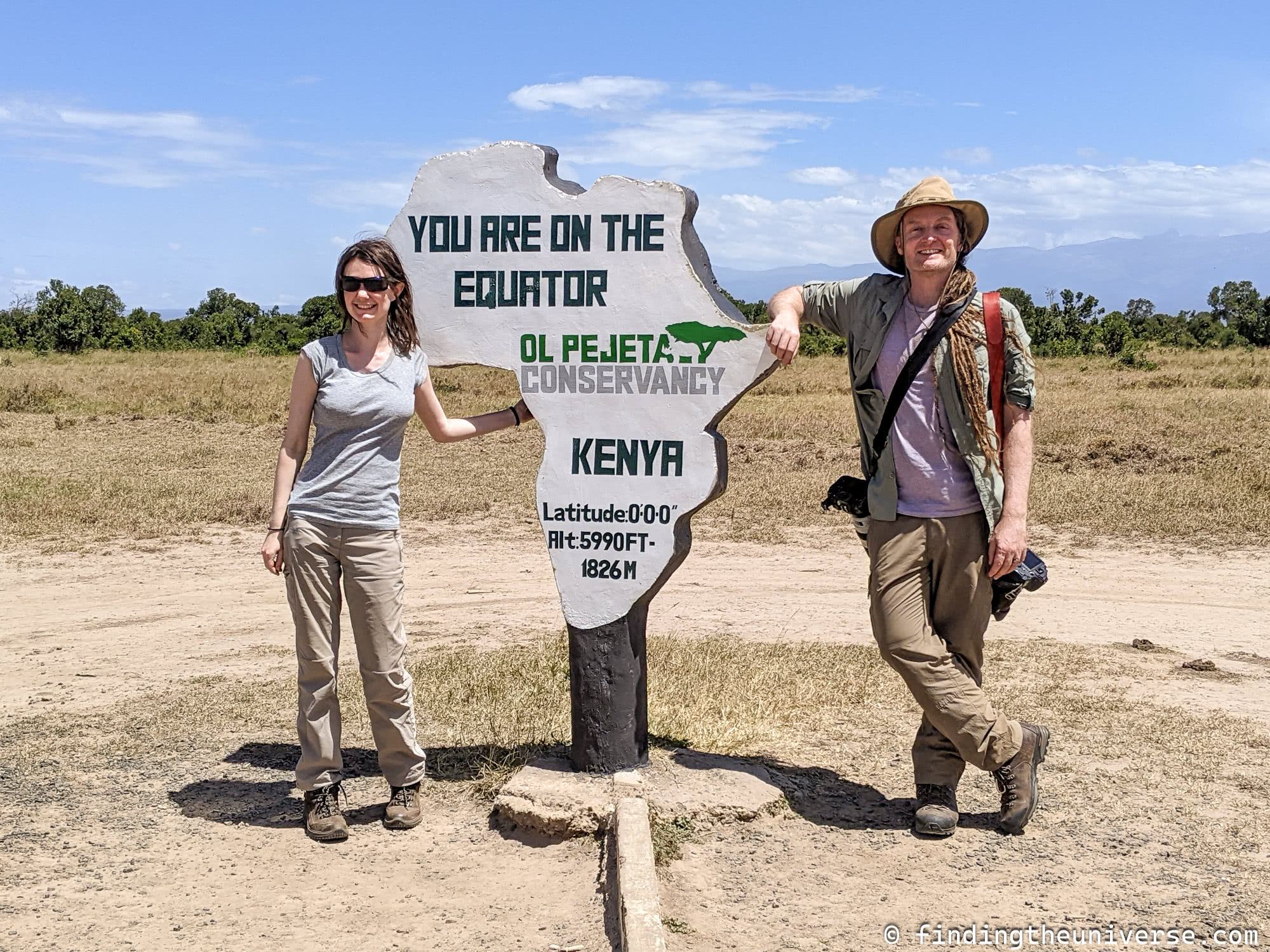

How to Choose the Best Sized Camera Strap for You and Your Camera
You may be wondering which Peak Design camera strap to buy for your camera. This decision will largely come down to the size and weight of your camera setup.
I’d say if you have a heavy camera setup, especially if you are going to use telephoto lenses, to go for the Peak Design Slide.
For most camera setups except the heaviest, I would say the Slide Lite would be my recommended option. It has all the features of the Slide in a slightly narrower, more lightweight package. This makes it easier to pack and carry. This is also a great option for most binoculars.
For the smallest cameras and very light set ups, I would also consider the Leash. Just note that the narrow strap can be uncomfortable with heavier setups but perfect for lightweight compact cameras. This strap is easier to fit into a purse or smaller bag.
Although I do highly recommend everyone keep a neck strap on their cameras for the best protection, not everyone loves a strap around their neck or shoulders.
If you prefer a less obtrusive setup and don’t want a neck strap, consider the Cuff wrist strap, which offers security in a minimal package. This can work well for lighter mirrorless setups, bridge cameras, action cameras, and point and shoot cameras.
Finally, if you want more security and stability when gripping your camera, you may consider also getting a hand strap such as the Clutch or Micro Clutch. I’d say Clutch works for larger cameras and personally I’d recommend the Micro Clutch for smaller cameras.
Honestly, I think whichever product you choose you will be happy with its performance, build quality, and longevity.
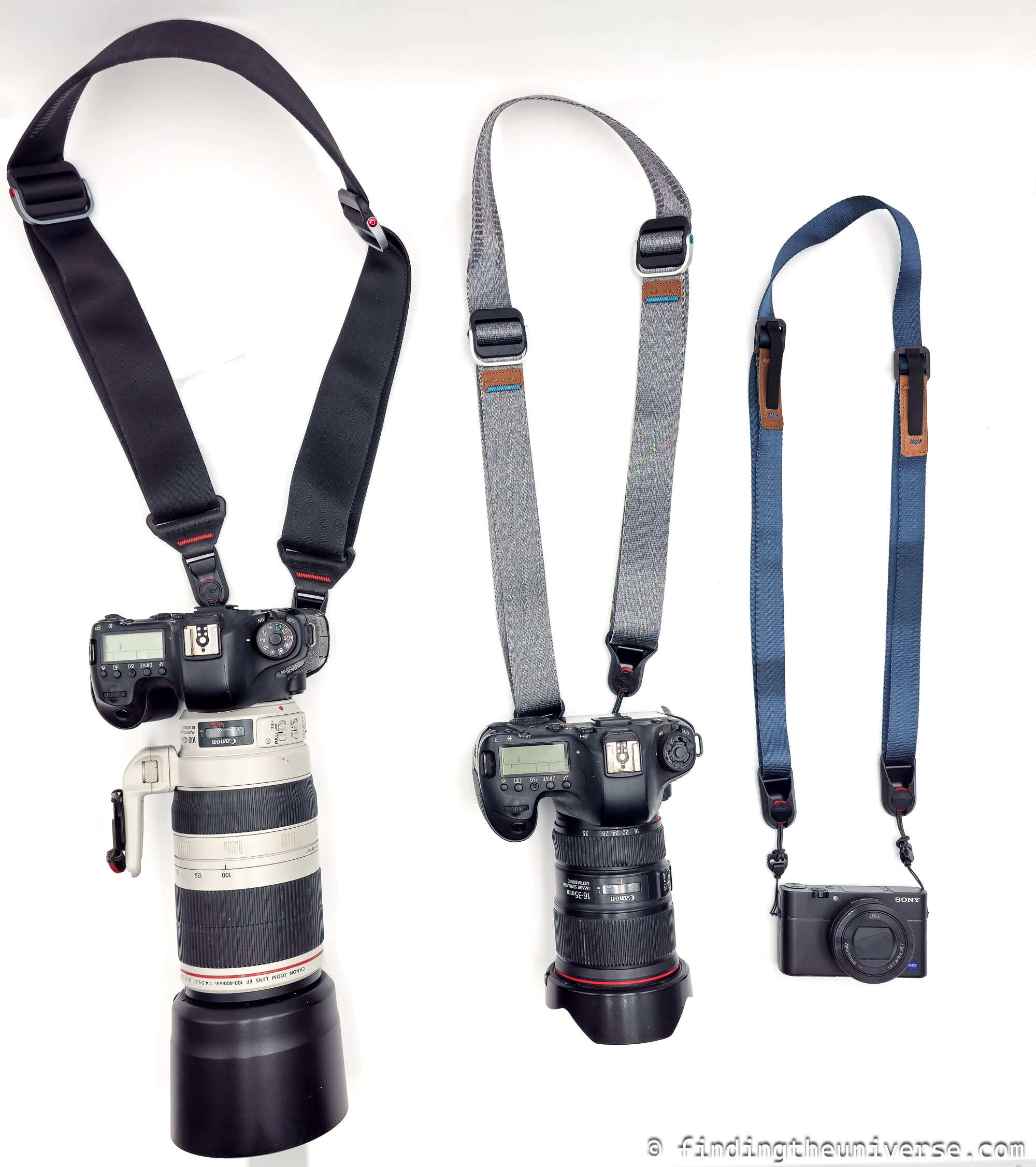

Peak Design Camera Strap Review Summary
As I said at the start of this review, I have been using the Peak Design straps for many years, across multiple camera bodies and lenses. In all that time they have kept my gear safe, which is the main purpose of the strap.
I also find them incredibly comfortable to wear even for long periods of time.
I think they offer one of the best strap systems on the market, with straps that are comfortable and secure. Their lifetime warranty is also something they stand by. So I am definitely happy to recommend the Peak Design camera strap system for your camera!
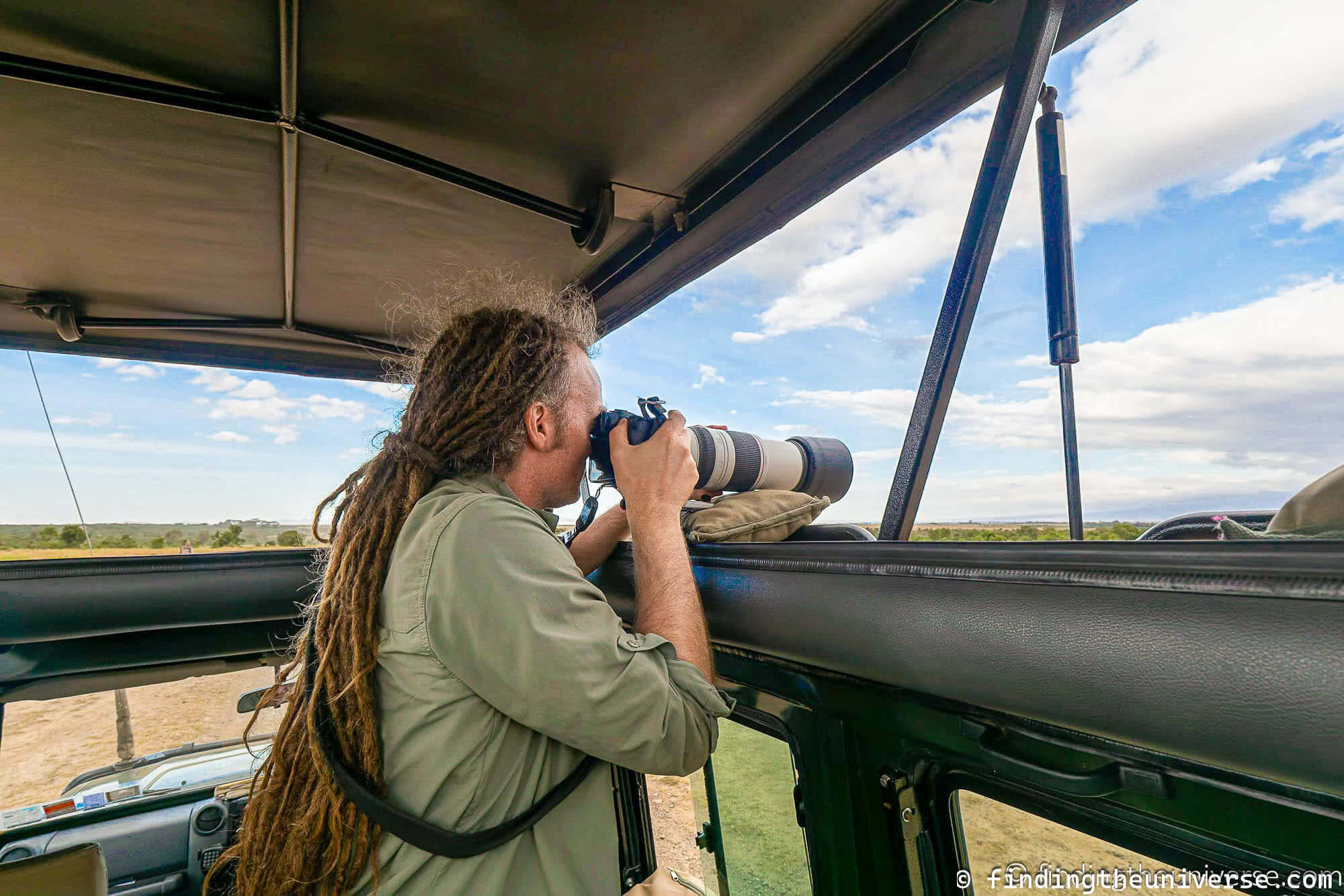

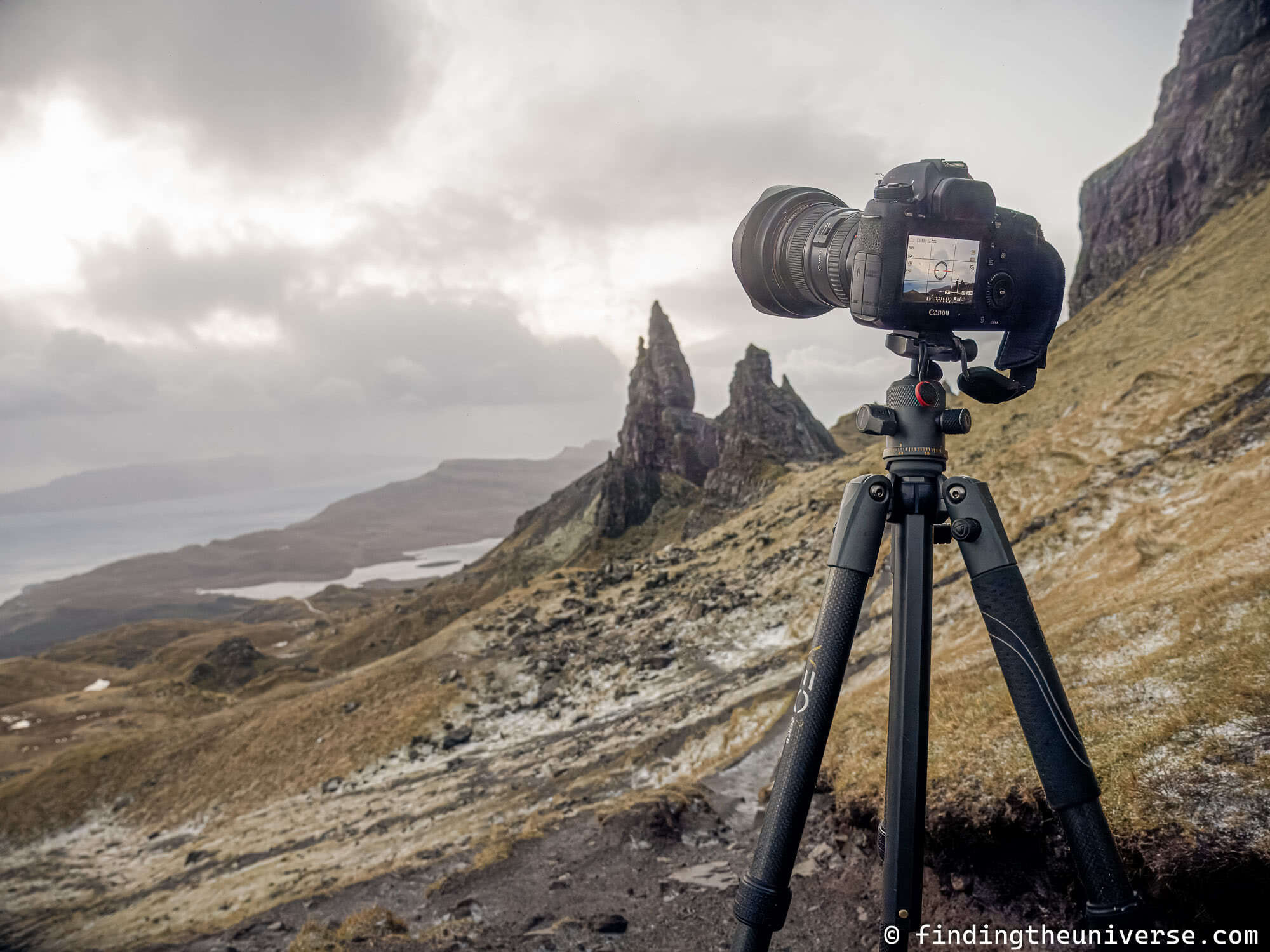

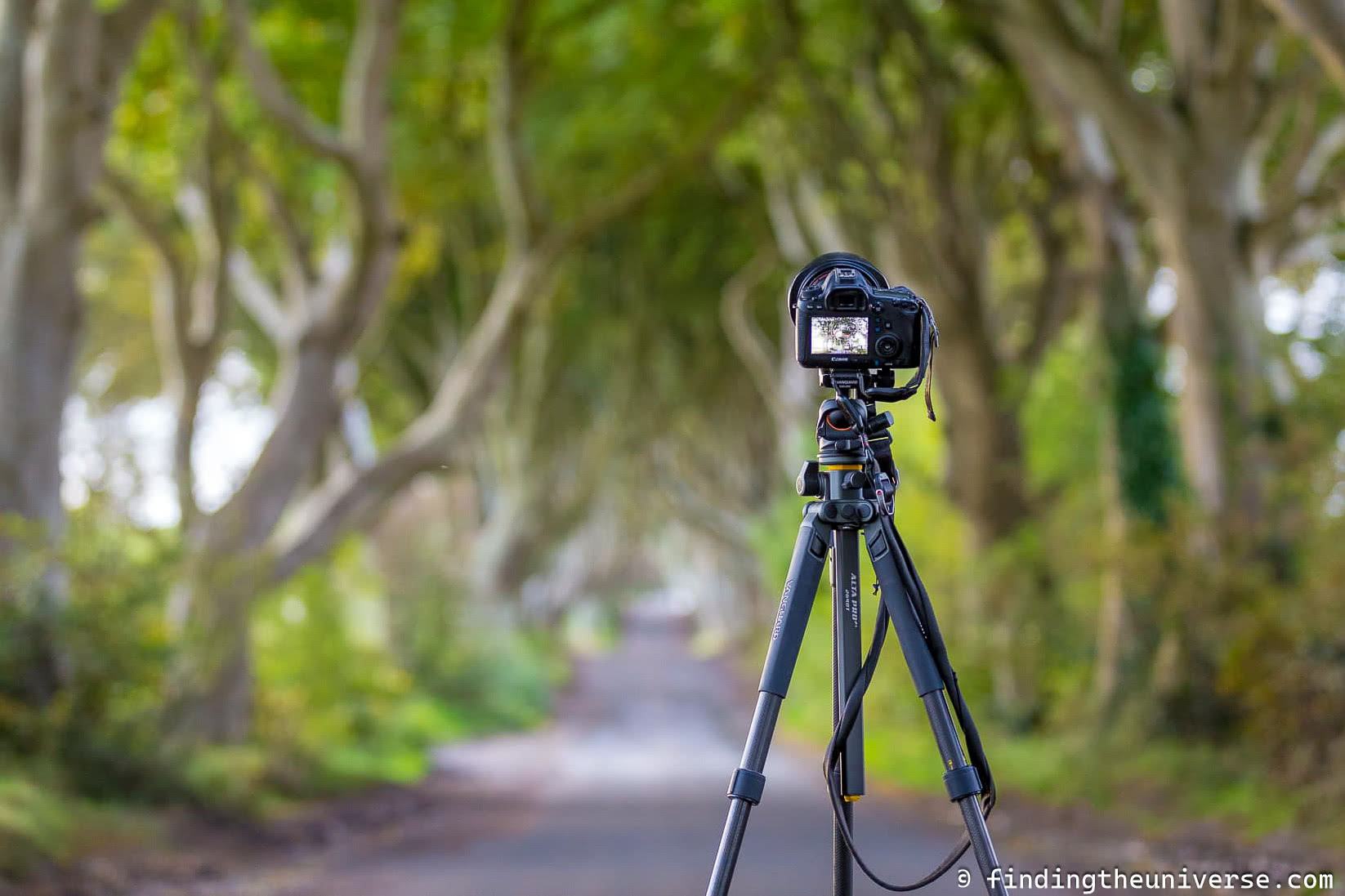

Where to Buy Peak Design products
If you are interested in purchasing Peak Design products, or just looking to see what they have on offer, you have a few options.
First, you can buy Peak Design products online directly on their website here. Peak Design sells globally through their official website and can ship products worldwide to over 100 countries.
Alternatively, you can buy them online from Amazon here. Peak Design has their own store on Amazon so you can be sure you are getting legitimate products. Prime members will probably appreciate the free and fast shipping if choosing Amazon.
Finally, you can also of course buy products in person if you live near a store selling Peak Design products. Peak Design has three of its own store locations: two in the USA (NYC and San Francisco) and one in Tokyo, Japan.
Further Reading
That’s it for my review of the Peak Design strap system – I hope you found it helpful. Before you go, I wanted to share some of our other content which we think you will find useful.
- I have a detailed review of the Peak Design travel tripod
- Our review of the Vanguard VEO 2 265CB tripod after three years of regular use.
- A review of the Vanguard VEO 2Go 265HCBM, the VEO 3+ 263AB and the VEO 3T+ 264CB.
- We have a guide to why you need a tripod, a guide to choosing a travel tripod, and a round-up of our favorite travel tripods
- We have a guide to how to use a compact camera, how to use a DSLR camera, and how to use a mirrorless camera. We also have a guide to how a DSLR works
- Knowing how to compose a great photo is a key photography skill. See our guide to composition in photography for lots of tips on this subject
- We have a guide to what depth of field is and when you would want to use it.
- We are big fans of getting the most out of your digital photo files, and do to that you will need to shoot in RAW. See our guide to RAW in photography to understand what RAW is, and why you should switch to RAW as soon as you can if your camera supports it.
- You’re going to need something to run your photo editing software on. See our guide to the best laptops for photo editing for some tips on what to look for.
- If you’re looking for more advice on specific tips for different scenarios, we also have you covered. See our guide to Northern Lights photography, long exposure photography, fireworks photography, tips for taking photos of stars, and cold weather photography.
- If you’re looking for a great gift for a photography loving friend or family member (or yourself!), take a look at our photography gift guide,
- If you’re in the market for a new camera, we have a detailed guide to the best travel cameras, as well as specific guides for the best cameras for hiking and backpacking, the best compact camera, best mirrorless camera and best DSLR camera. We also have a guide to the best camera lenses.
- If you want a camera or lens, but the prices are a bit high, see our guide to where to buy used cameras and camera gear for some budget savings options.
And that’s it! As always, if you have any comments or questions on this post, just pop them in the comments section below and we’ll respond as soon as we can!
